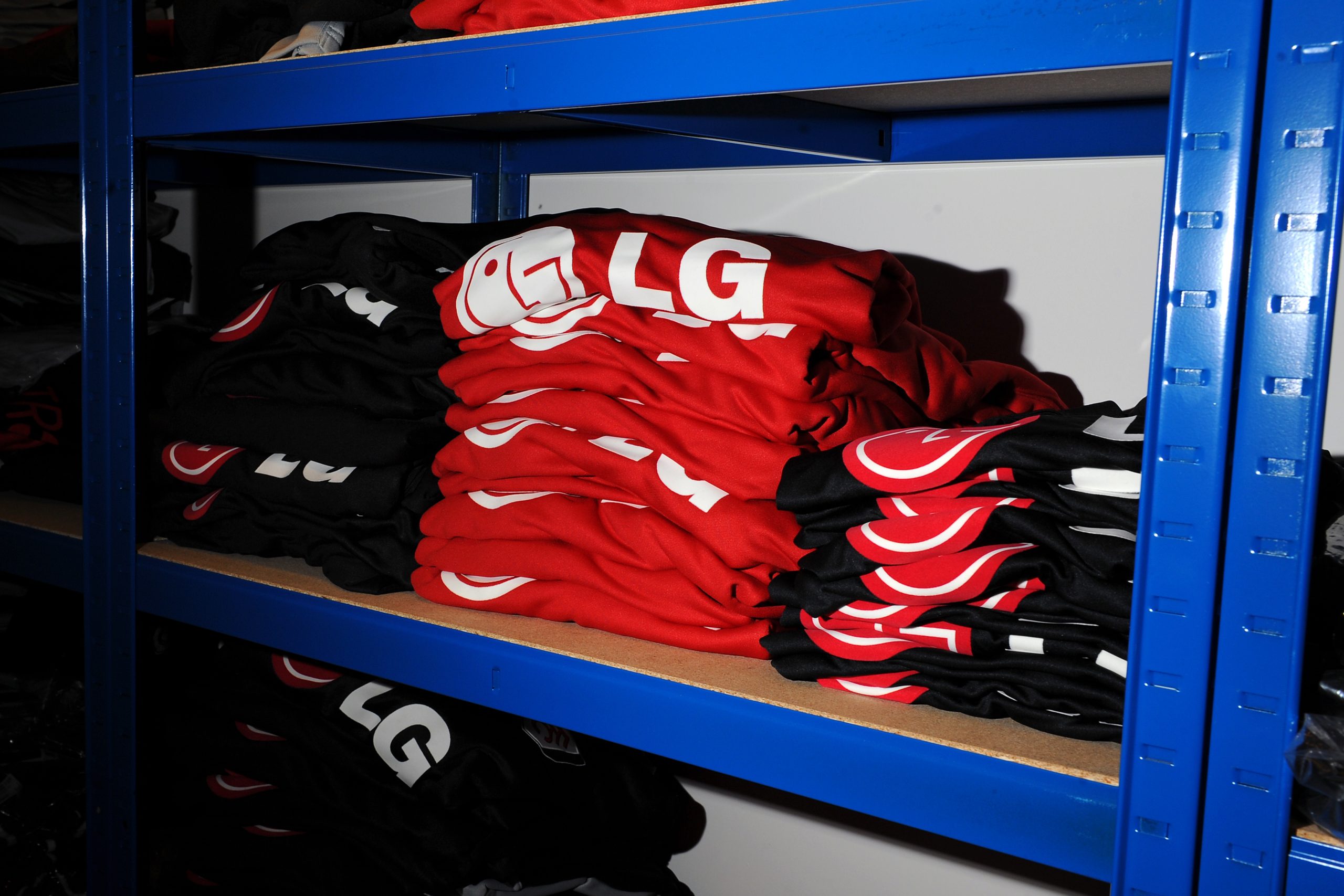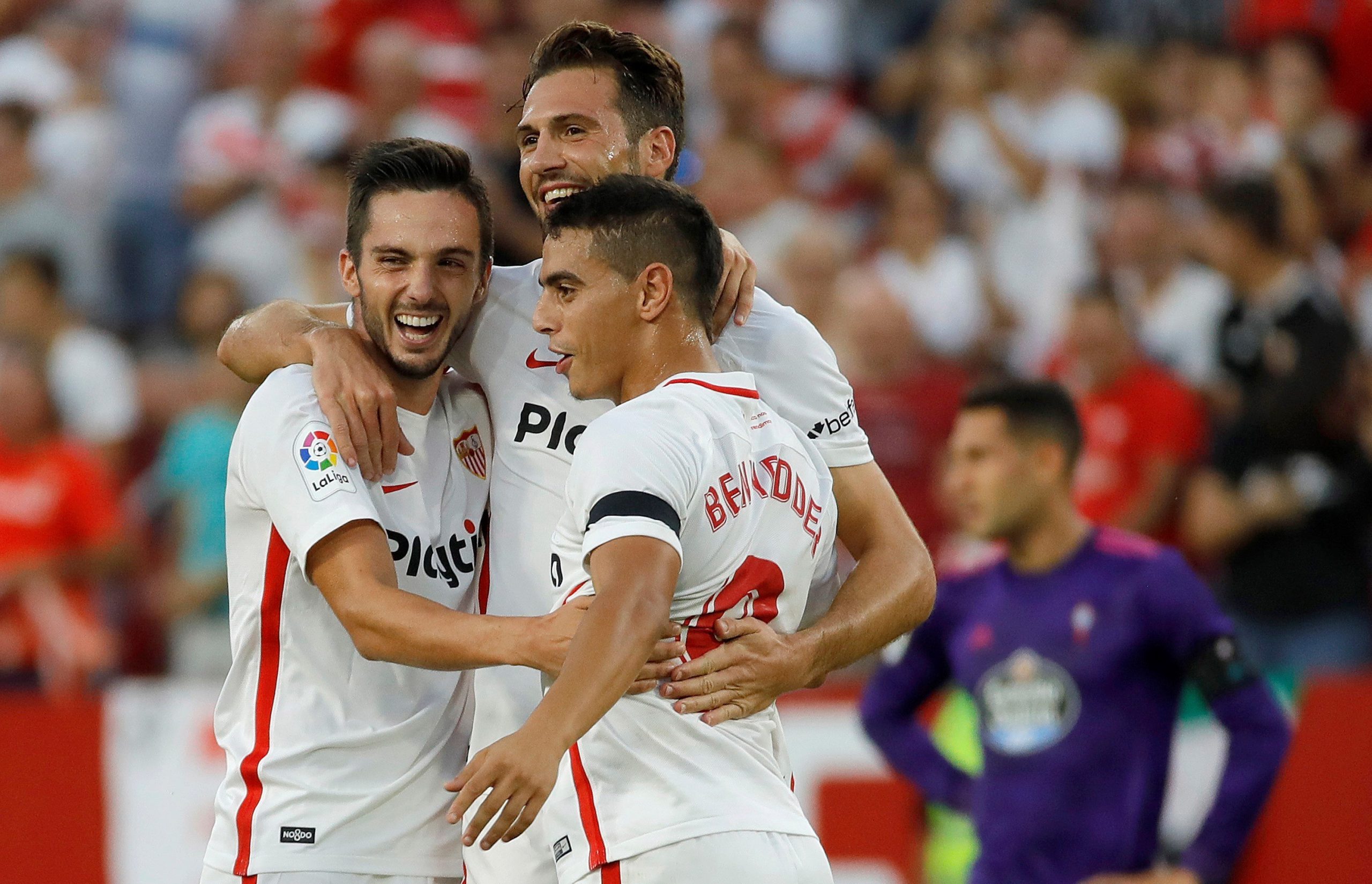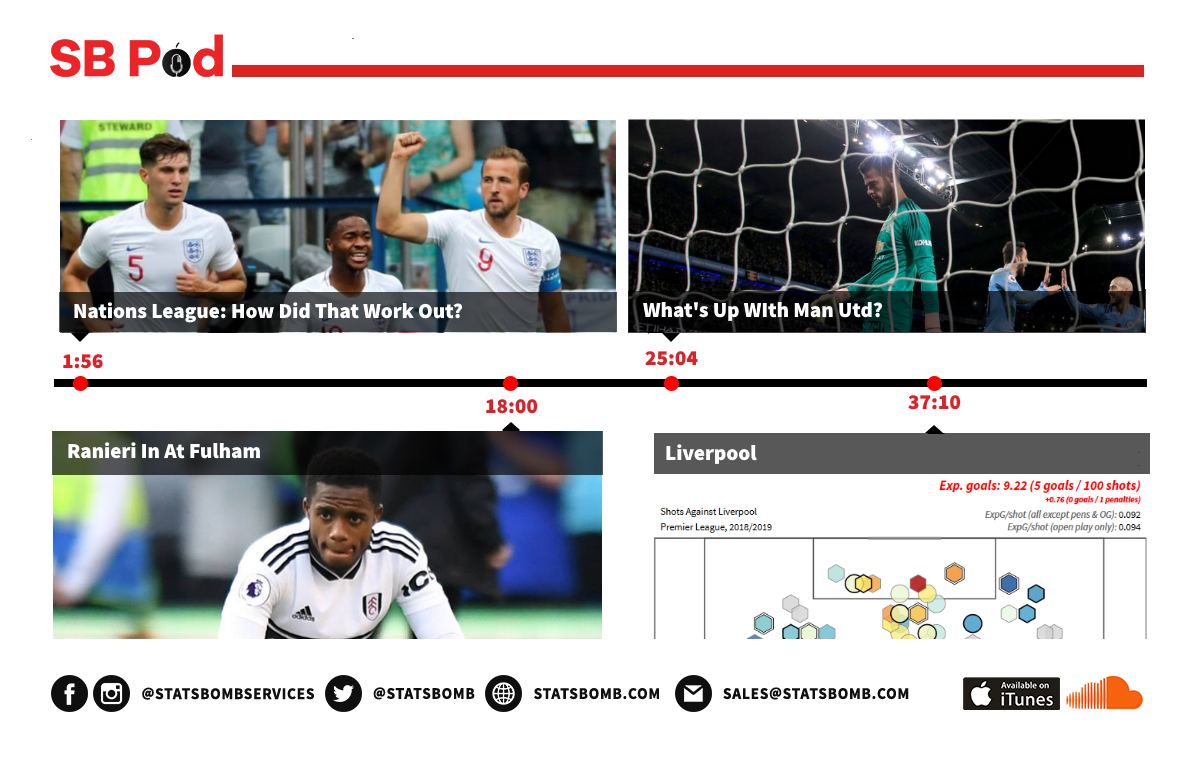Football is a team game, but every team is made up of individuals. And if there’s one thing about fans, it’s that we love individual players to rally behind. And there are plenty to choose from up and down the Women’s Super League. From Arsenal, running away with the league; to recent champions Manchester City and Chelsea, as well as Birmingham City and Reading, in the chasing pack; down to struggling teams at the bottom like Brighton, Yeovil, and Everton. Here are some of the best picks from StatsBomb’s WSL data.
(Ed. note- as always please allow for some data lag in our analysis. Specifically the Manchester City v West Ham match is currently not in our data set, therefore crediting Georgia Stanway with two fewer goals than her actual seven)
Youngsters tearing up the league
WSL is blessed by some great young wingers. Two are on Merseyside, Liverpool’s Rinsola Babajide and Everton’s Chloe Kelly are first and third in the league for successful dribbles per 90 minutes. Babajide is averaging over four, literally off the charts on our radars, so woe betide any full-back coming up against her. 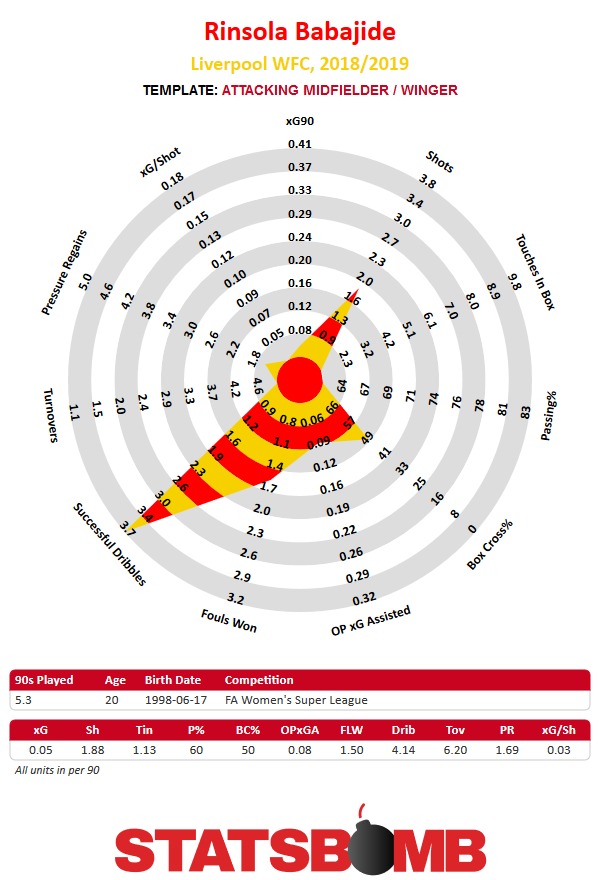
Between Babajide and Kelly is Manchester City’s Caroline Weir. Weir consistently terrorises the right-side of opponent defences, averaging 3.15 dribbles per 90 minutes. She has three goals to her name already, including a superb strike against West Ham United (a reward for some otherwise slightly errant shot selection that sees her shots average just a six per cent chance of going in).
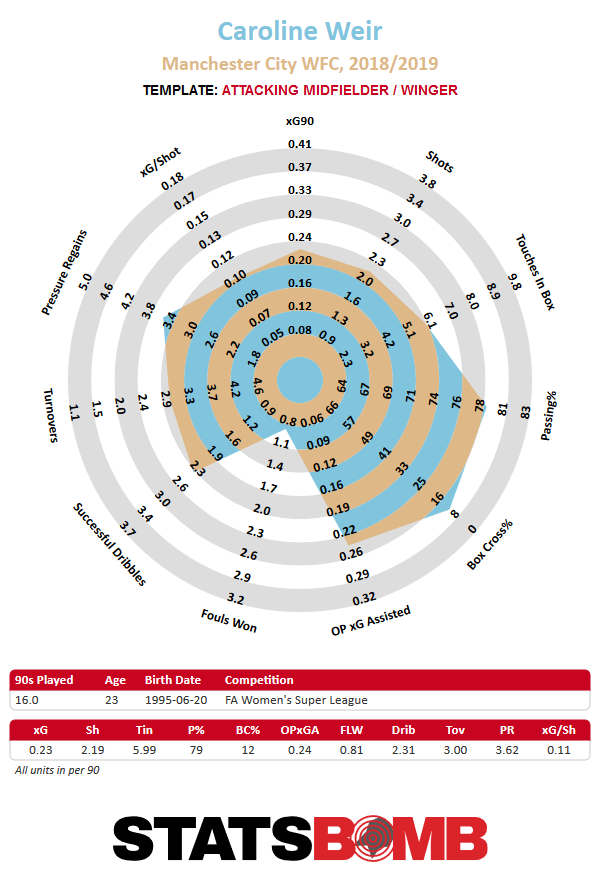
At the moment, she’s off the charts for the quality of chances that she sets up. They’re worth over 0.34 expected goals per 90 minutes that she plays - or one assist for every three full games. Only two other players in the league - Beth Mead at Arsenal and Gemma Davison at Reading - do better.
Working hard on the wing
It’ll usually be players at the top teams who dominate statistical categories - and we’re going to see some real heavyweight examples of that later on - but there’s a lot of incredibly hard work going on across the WSL. Ellie Brazil at Brighton leads the league for pressure events per 90 minutes, locking down the right flank (defending the goal to the left of the graphic).
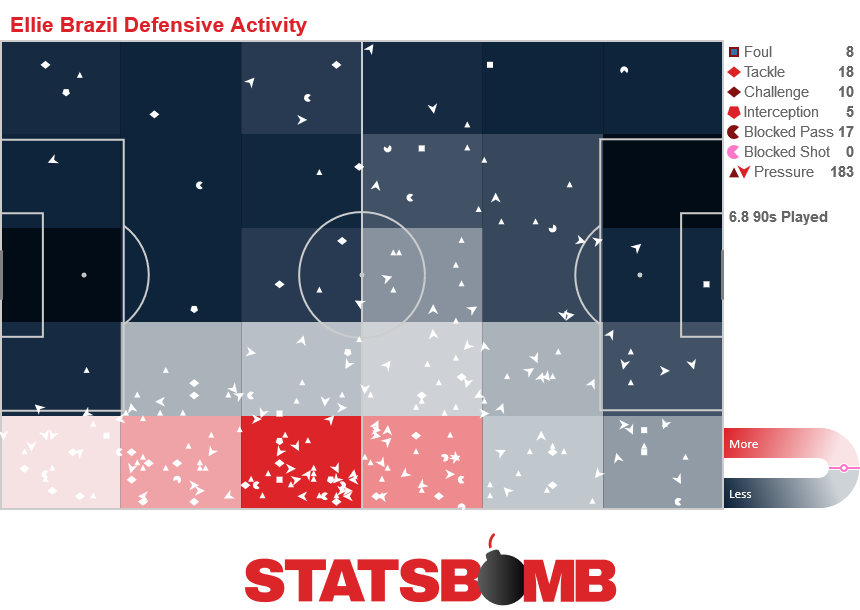
Just behind her, and on the opposite flank, is Ella Rutherford at Bristol City. At 19 and 18 respectively, Brazil and Rutherford are putting in hard yards for their team and getting experience that will serve them well in the future.
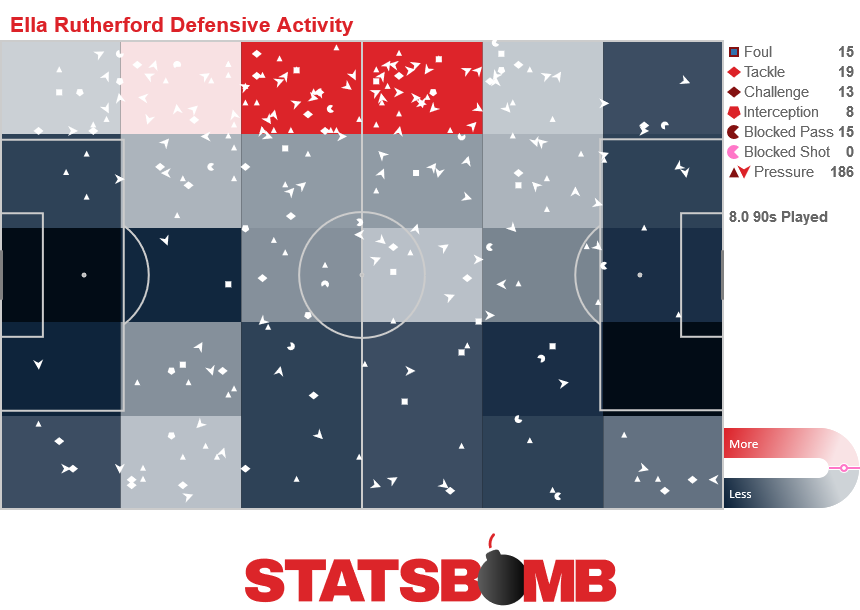
Dominating the middle
Chasing down opponents isn’t just for teenagers though. Behind the two whippersnappers, and leading the way for pressures that lead to her team getting the ball, is Manchester City’s Jill Scott. Scott’s been at the top of the game for over a decade, winning her first England cap back in 2006, and is still a hell of a midfielder. She’s arguably the best defensive midfielder in the WSL. Running her close, though, is Arsenal’s summer Swiss signing Lia Wälti. Wälti makes an impressive amount of tackles and interceptions considering how much of the ball the Gunners have, and, once she gets it, she moves it forward towards goal as well. The combination of defensive actions and successful dribbles make her a very important part of the team.
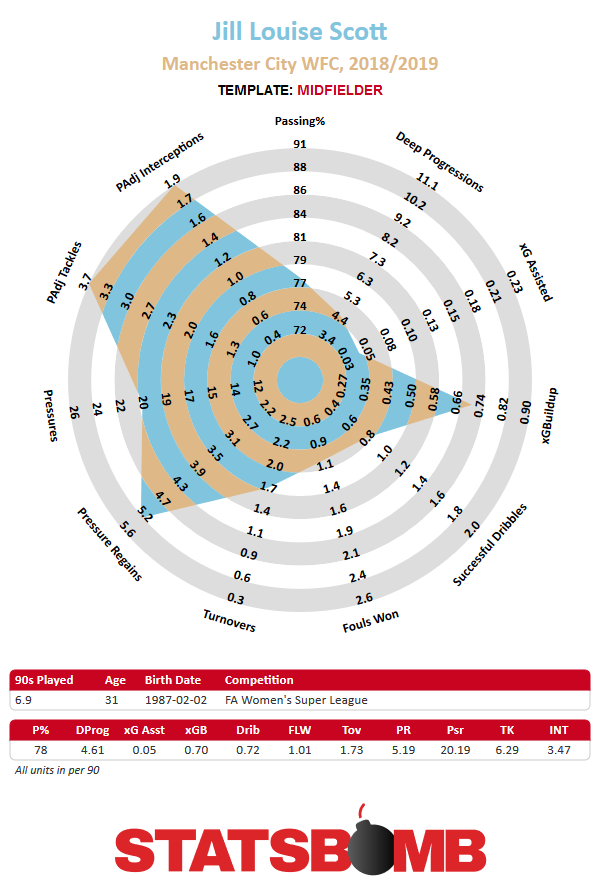
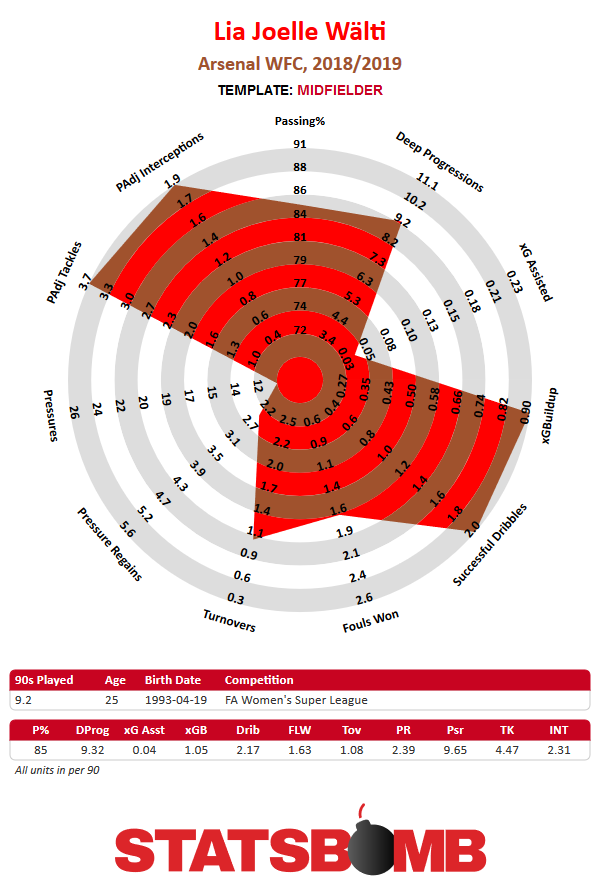
Safe hands
While we’re speaking about crucially important parts of the team, it makes sense to mention Ann-Katrin Berger, Birmingham City’s goalkeeper. As things currently stand, the Blues are third in the league, just two points behind Manchester City and three points ahead of WSL holders Chelsea. Berger’s part in that can’t be understated - out of WSL’s starting goalkeepers she leads the way for saves above expectation.
Taking into account the quality of shots she’s faced, she’d be expected to save 69.9 per cent of them; in actual fact, she’s saved 82.8 per cent. Is there anything opponents can do to improve their chances? StatsBomb’s data suggests there might be a couple of holes low to her right or high to her left...
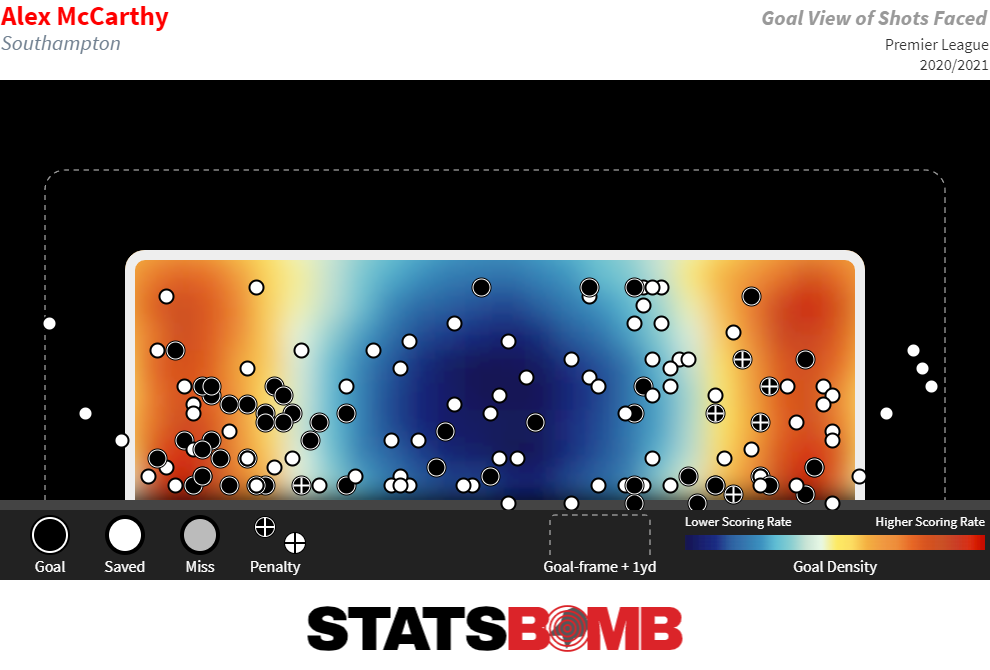 Racking up goals like no tomorrow
Racking up goals like no tomorrow
Not that Vivianne Miedema or Nikita Parris would need help scoring goals. The pair are extraordinarily good, both in terms of volume and quality of chances that they get on the end of (although being on teams as good as Arsenal and City certainly helps). The amount of pressure that Parris applies on opponents embodies defending from the front.
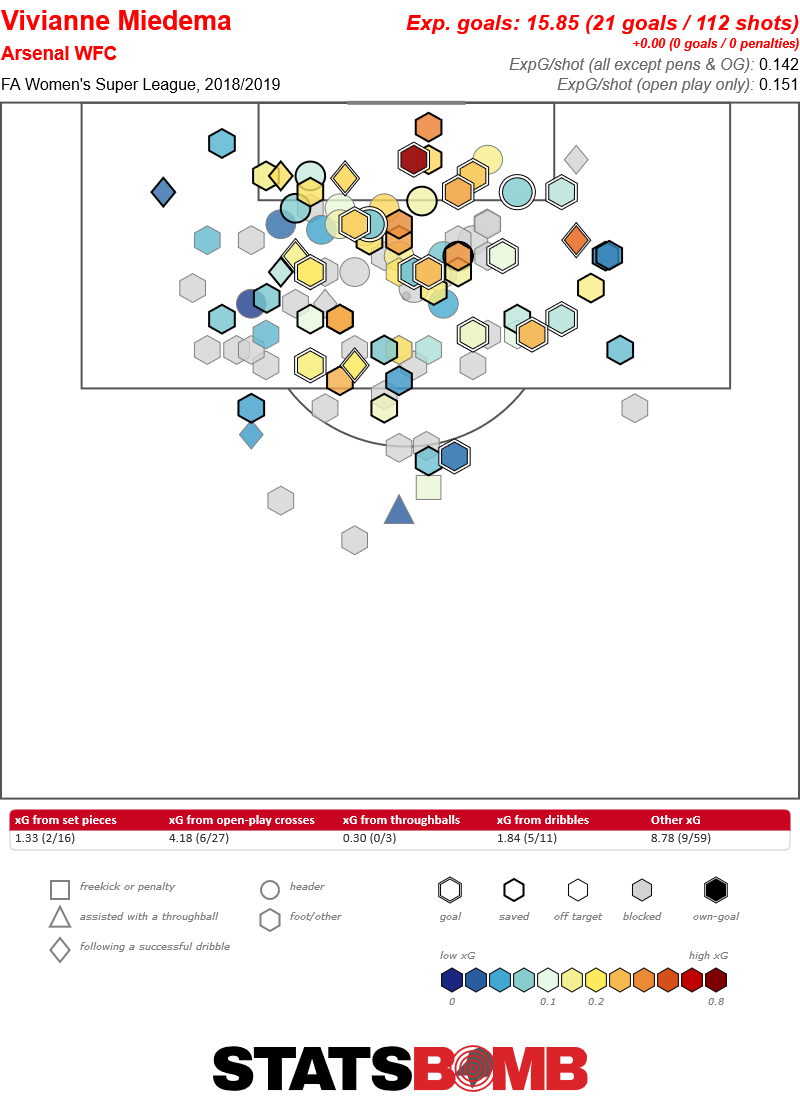
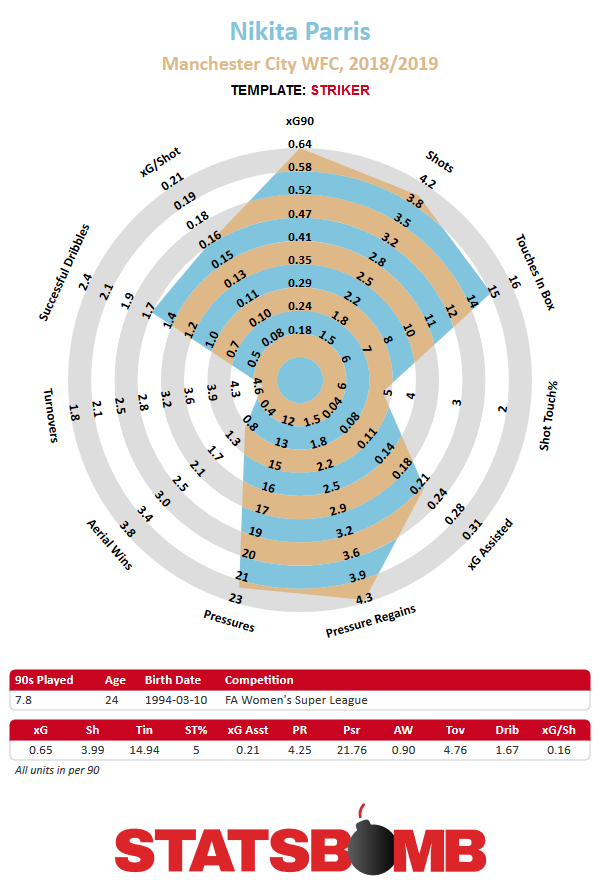
Parris’ team-mate Georgia Stanway has also been amongst the goals recently, although who knows whether it’ll last. She’s scored more than double what her expected goals would think, with a shot map that’s almost the exact opposite of Parris’.
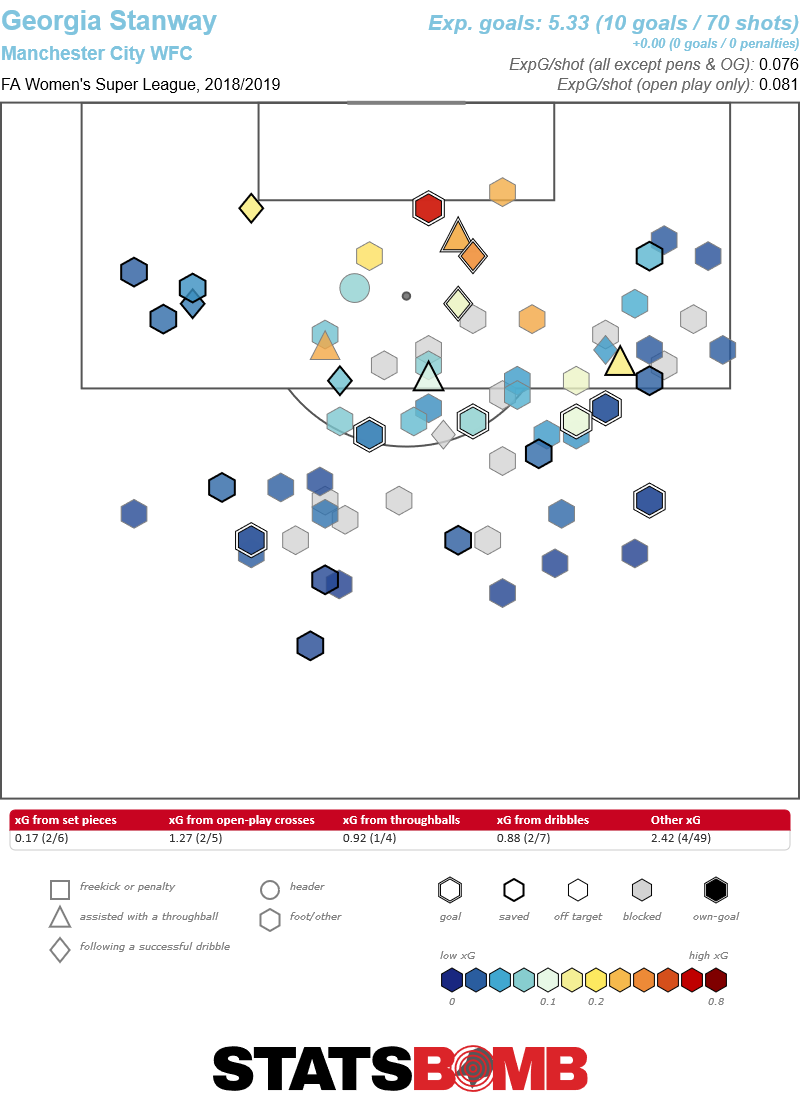
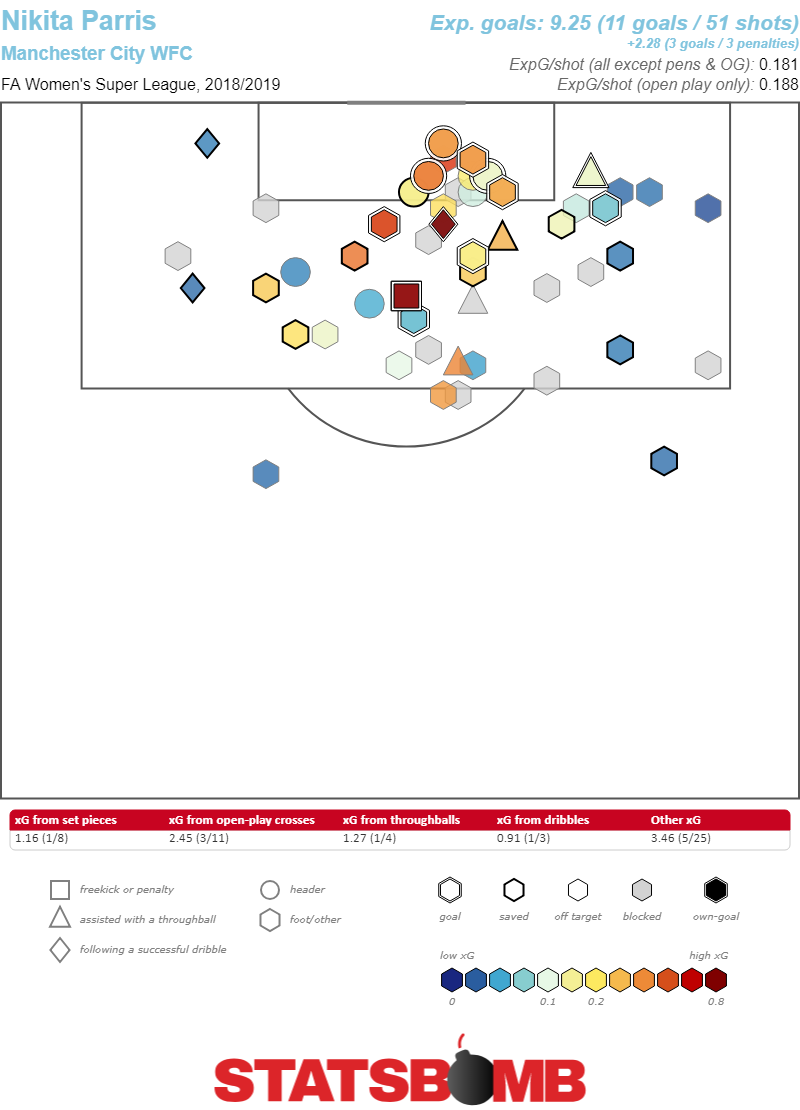
Across the entire league there are some cracking players to be excited about, and there’s just over half of the WSL left to go. Get yourself down to a game.
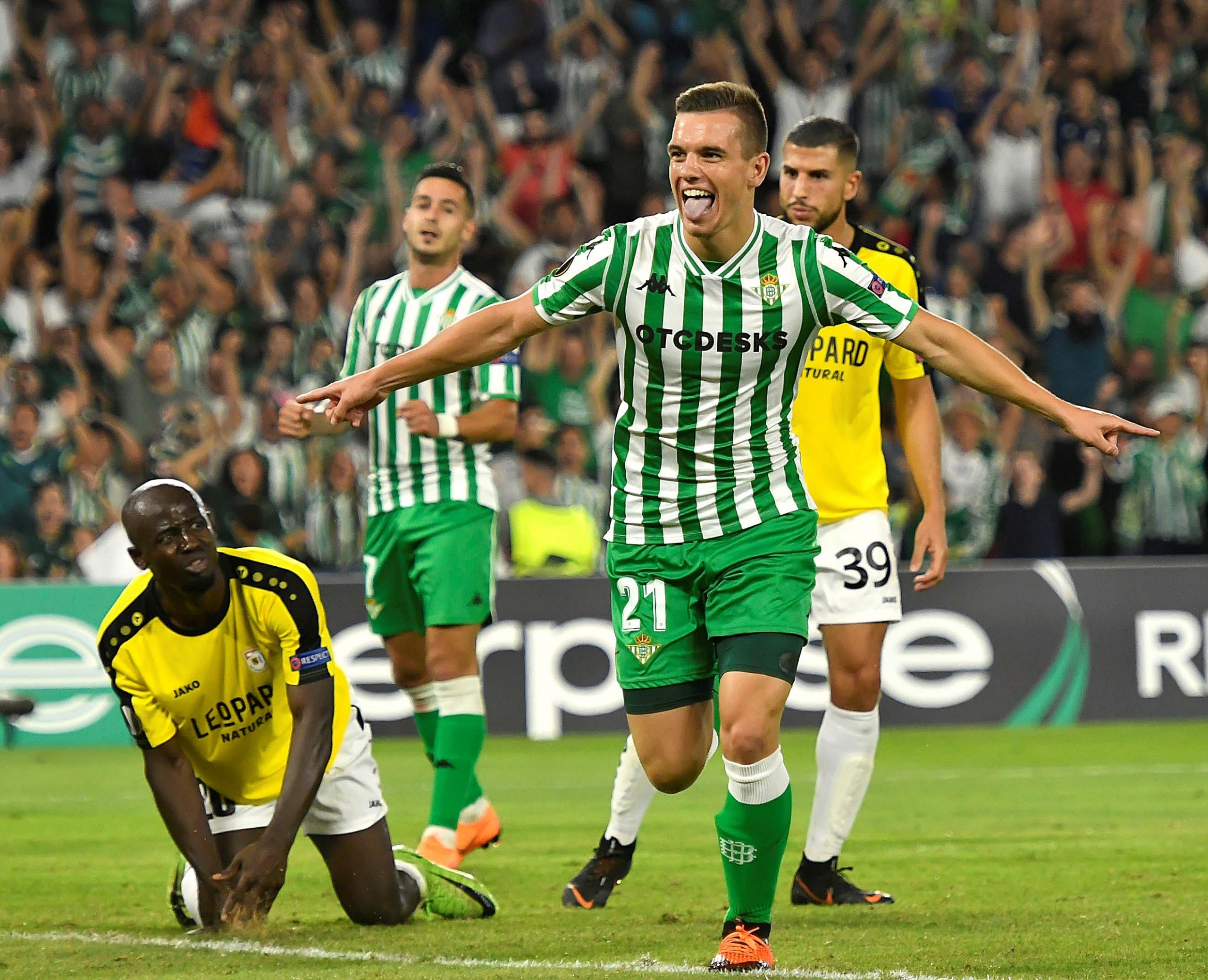





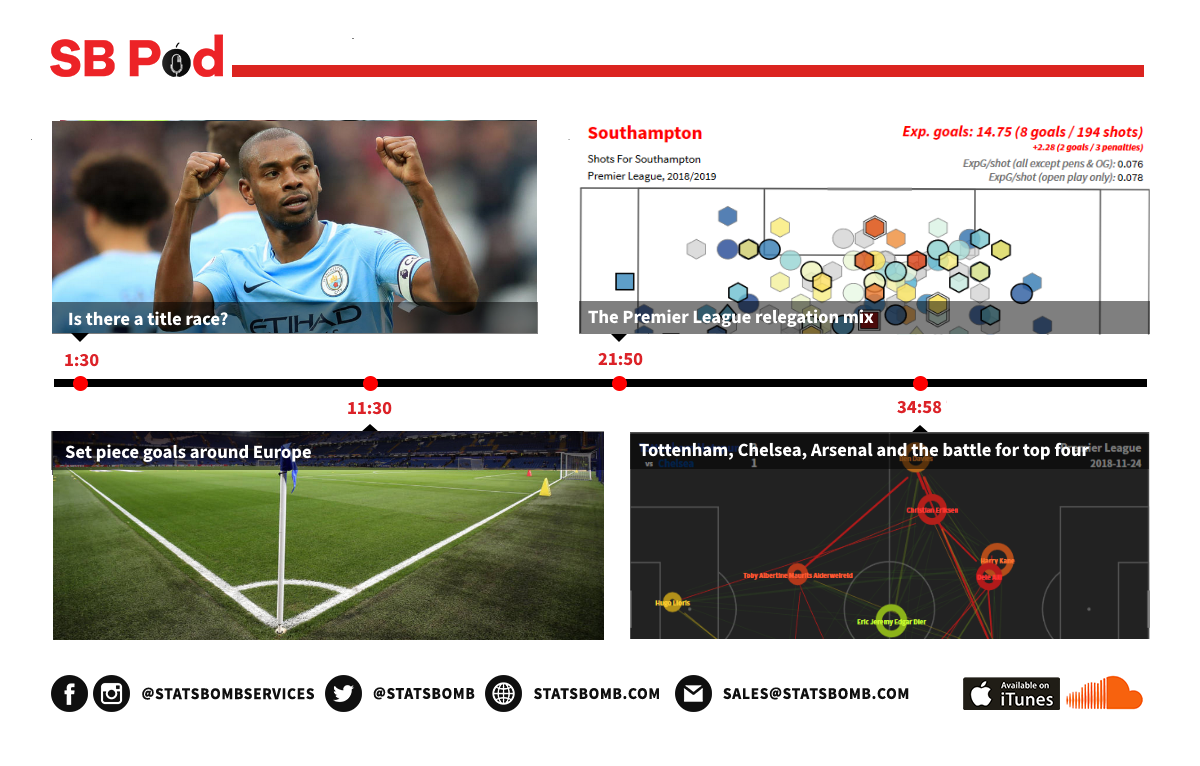
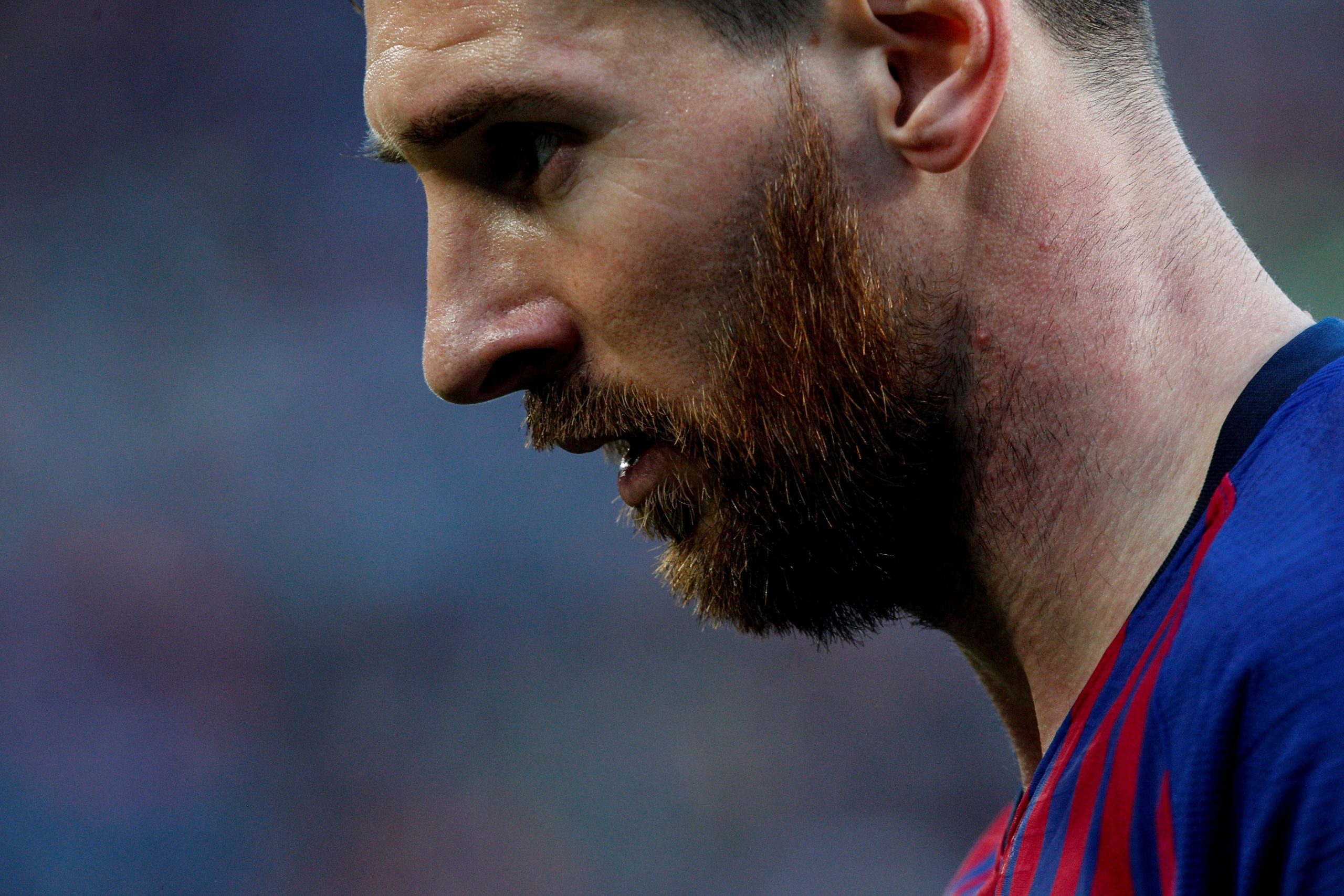
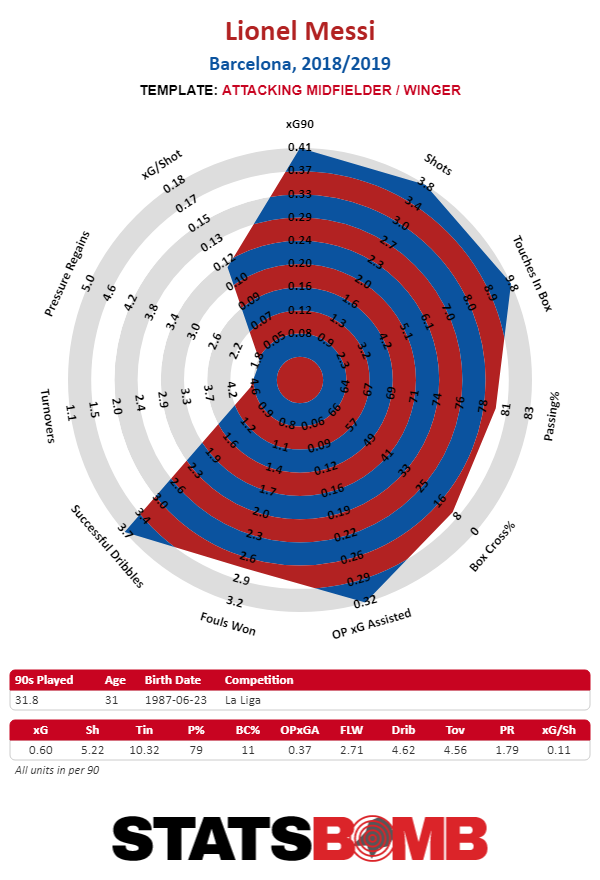
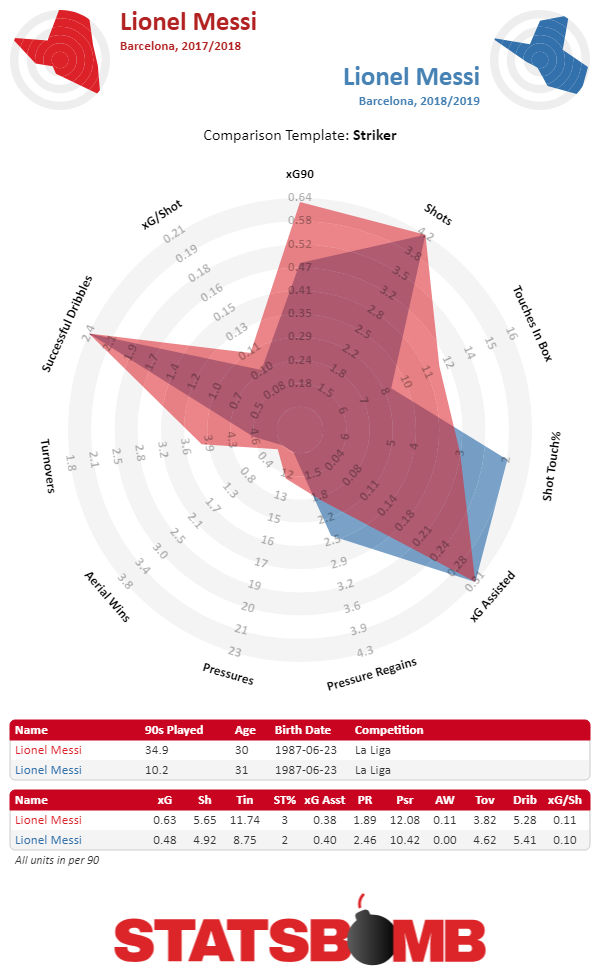
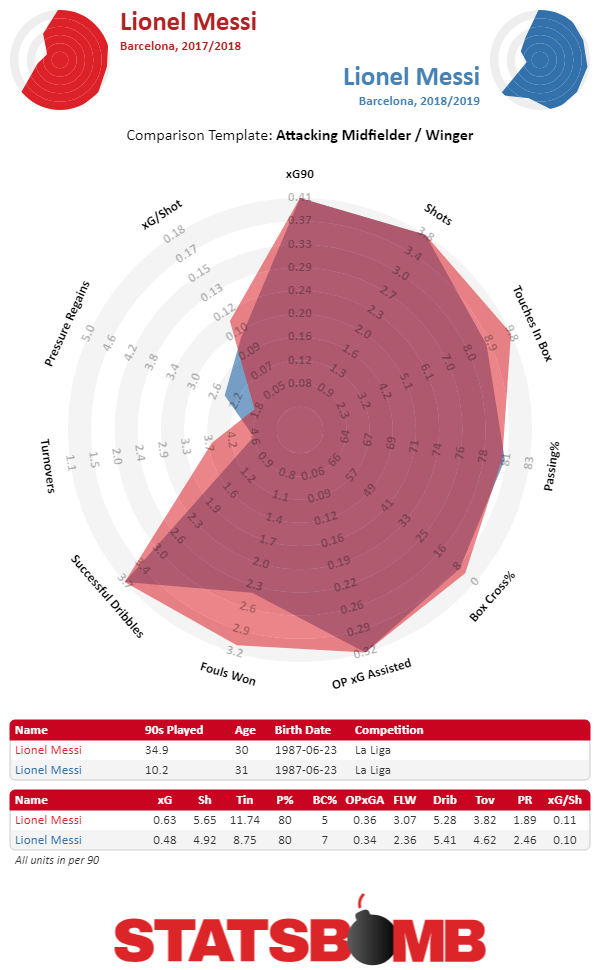
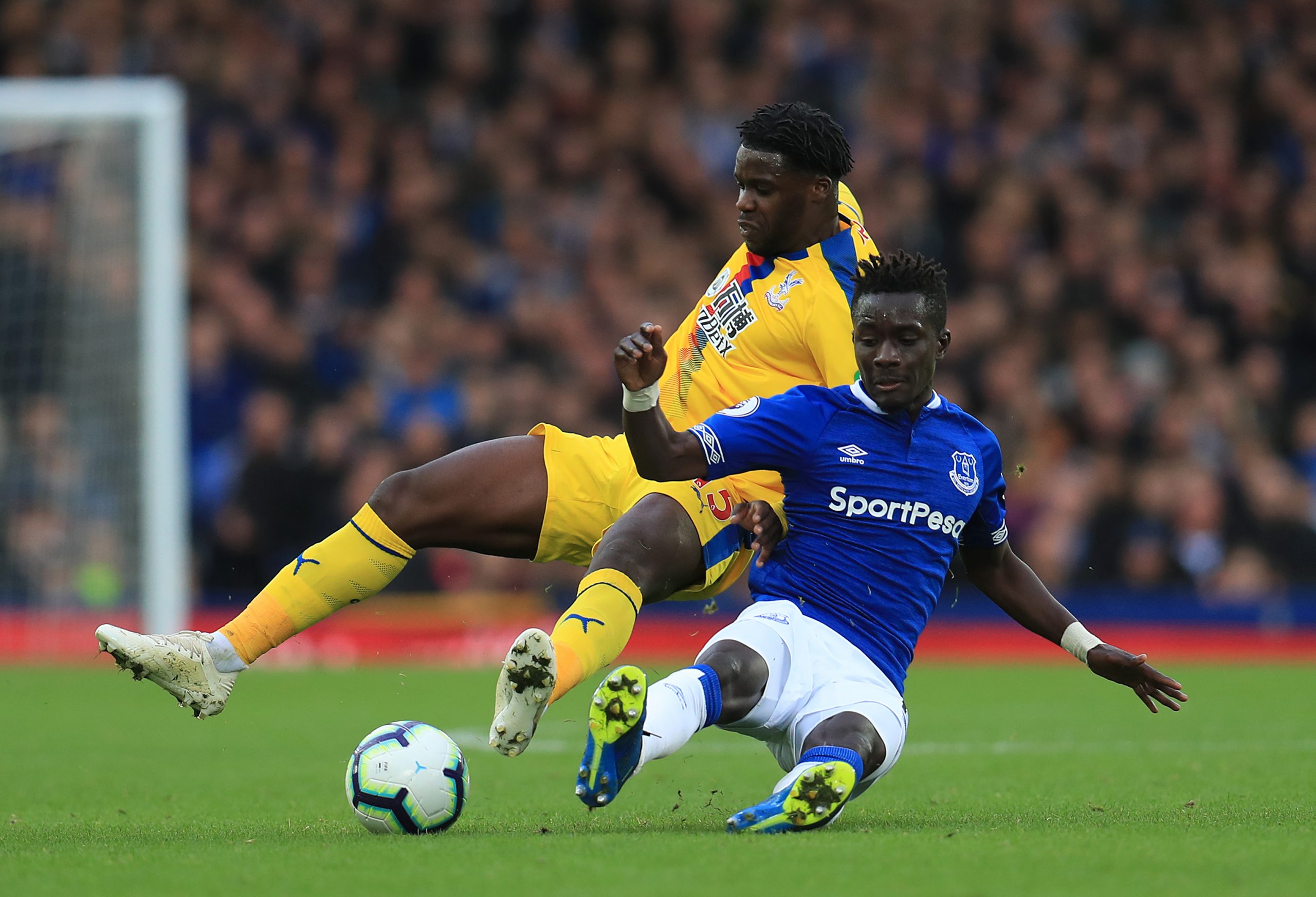
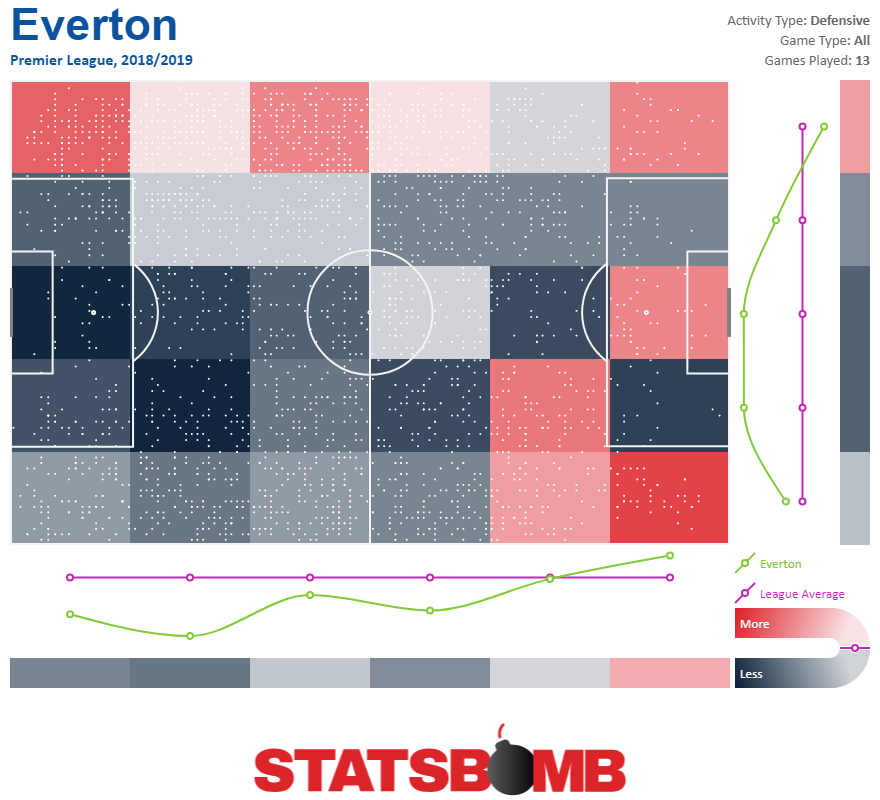 Hrm. That’s not the defensive pressure map of a team that presses a lot. It’s not really the defensive pressure map of a team that does anything a lot. What’s going on? Well, the first thing to check is the possession numbers. It’s possible that if Everton just keep the ball a lot they could just be playing under the radar good defense. Extreme possession imbalances could, at least in theory, lead to a team pressing when they don’t have the ball, but simply not logging that many pressing events due to how rarely that happens. And while even then we should find some evidence of pressing, at least skewed possession numbers would show us where to start. But Everton don’t actually have high possession numbers. They play 469 passes per game, only the 11th highest total in the league which nullifies the fact that they only allow 455, the fifth fewest. They aren’t keeping the ball for long stretches, and they certainly aren’t allowing the opponent to play a lot of passes themselves. But, stubbornly, it doesn’t look like they do much defending either. Something just doesn’t add up. The missing piece of the puzzle comes if you filter out pressures. This is Everton’s head map only looking at the more traditional defensive stats and voila, we begin to see something resembling a defensive shape appear. Silva’s team may not apply a ton of pressure to their opposition, but they’re very focused on taking the ball away right before it gets into their own half.
Hrm. That’s not the defensive pressure map of a team that presses a lot. It’s not really the defensive pressure map of a team that does anything a lot. What’s going on? Well, the first thing to check is the possession numbers. It’s possible that if Everton just keep the ball a lot they could just be playing under the radar good defense. Extreme possession imbalances could, at least in theory, lead to a team pressing when they don’t have the ball, but simply not logging that many pressing events due to how rarely that happens. And while even then we should find some evidence of pressing, at least skewed possession numbers would show us where to start. But Everton don’t actually have high possession numbers. They play 469 passes per game, only the 11th highest total in the league which nullifies the fact that they only allow 455, the fifth fewest. They aren’t keeping the ball for long stretches, and they certainly aren’t allowing the opponent to play a lot of passes themselves. But, stubbornly, it doesn’t look like they do much defending either. Something just doesn’t add up. The missing piece of the puzzle comes if you filter out pressures. This is Everton’s head map only looking at the more traditional defensive stats and voila, we begin to see something resembling a defensive shape appear. Silva’s team may not apply a ton of pressure to their opposition, but they’re very focused on taking the ball away right before it gets into their own half. 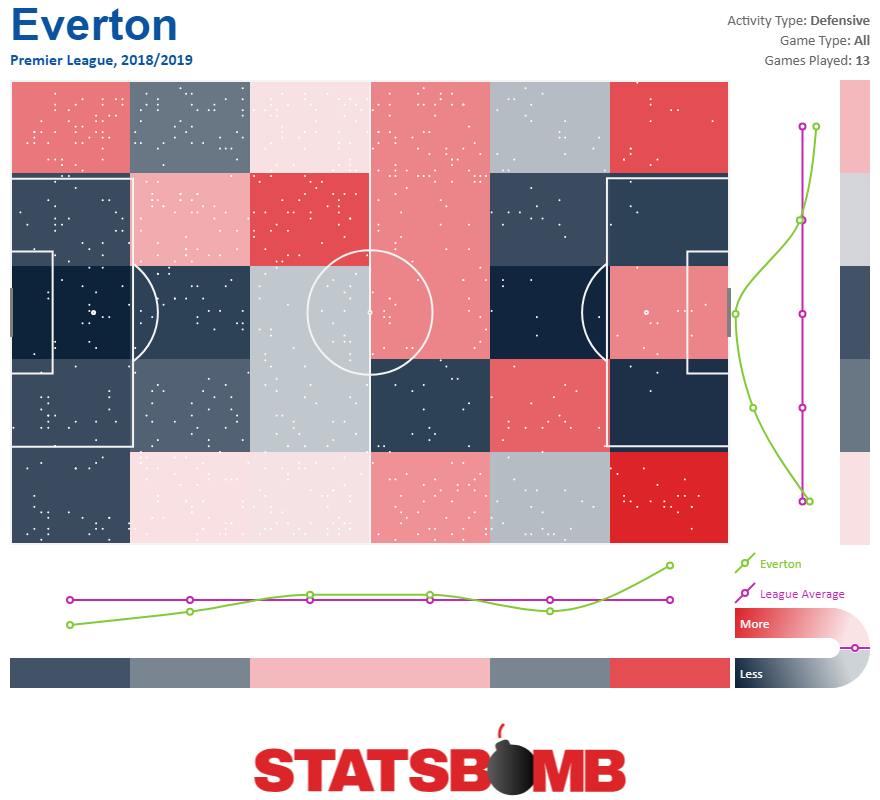 The pattern shows up in Everton’s midfield star Idrissa Gueye too. Here’s a defensive heat map of all of his actions.
The pattern shows up in Everton’s midfield star Idrissa Gueye too. Here’s a defensive heat map of all of his actions. 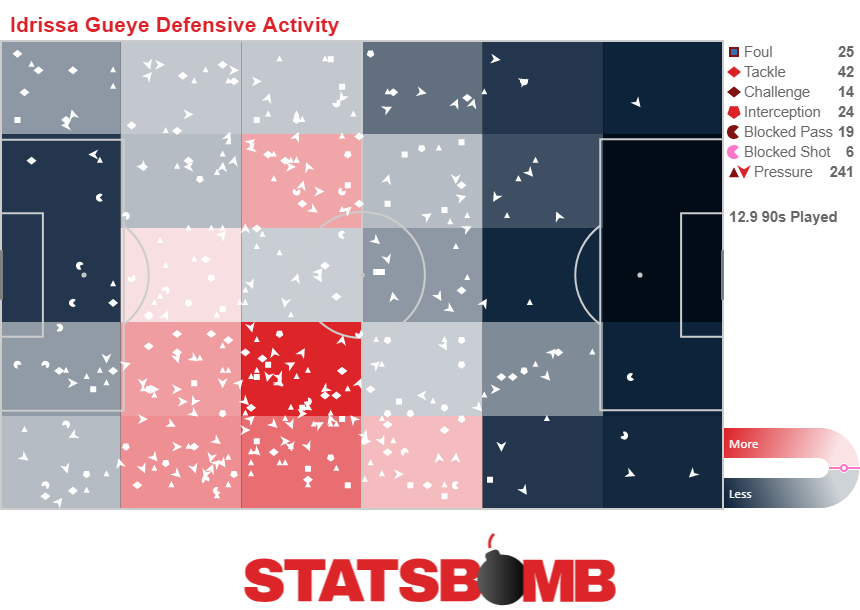 Here’s one that only looks at defensive actions that force a change in possession.
Here’s one that only looks at defensive actions that force a change in possession. 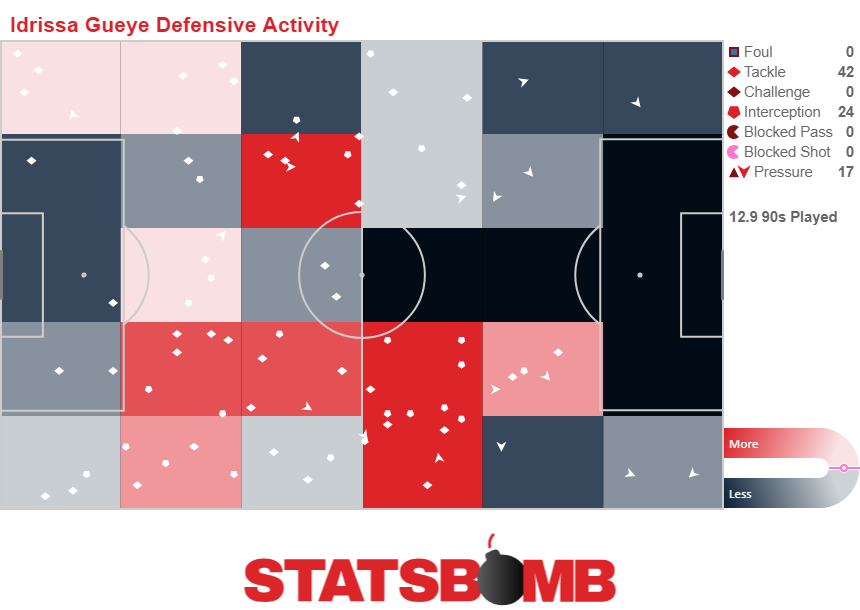 Looked at the first way, he’s a pretty good midfielder who patrols his area of the pitch but not much more. Looked at the second way and he sure seems like an elite ball hunter. Same story comes through on his radar where he maxes out tackles and interceptions adjusted for possession but is much more average when it comes to pressures.
Looked at the first way, he’s a pretty good midfielder who patrols his area of the pitch but not much more. Looked at the second way and he sure seems like an elite ball hunter. Same story comes through on his radar where he maxes out tackles and interceptions adjusted for possession but is much more average when it comes to pressures. 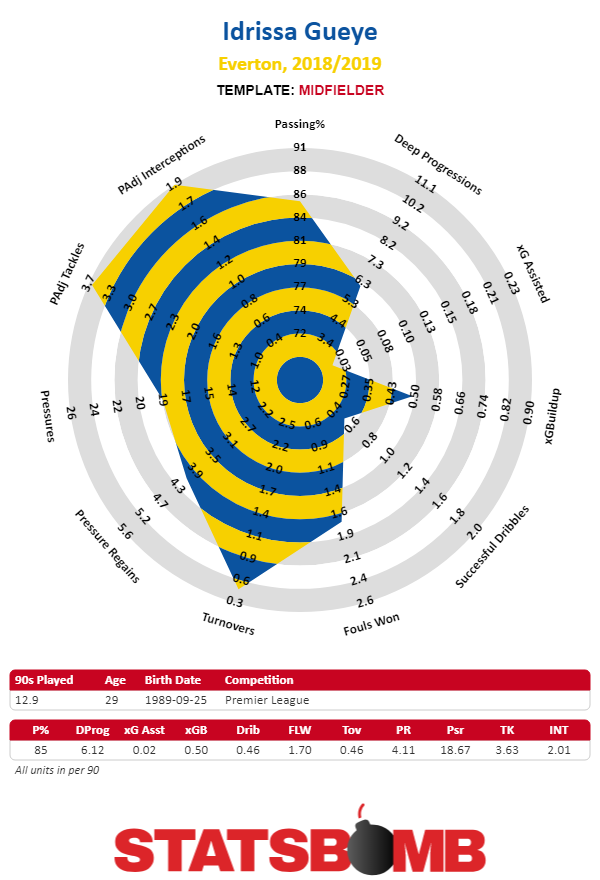 In fact Gueye leads the Premier League (among players with 500 minutes played or more) with 3.63 possession adjusted tackles per 90 minutes this season and he’s seventh with 2.01 possession adjusted interceptions. Even if you don’t adjust for possession he’s still third in the Premier League in combined tackles and interceptions with 5.11 per 90 minutes. He’s not a machine at applying pressures, but he is one when it comes to winning the ball back. This is the Everton gamble. They’re a high wire act. They get tons of bodies forward, and position themselves high up the field, but rather than work collectively to pressure the ball, they rely on an elite midfielder to win the ball back for them. Without Gueye the entire system would collapse. The fullbacks would get caught high up the field, Andre Gomes would constantly be stranded in space. The center backs would be left out on an island. That still happens sometimes, Everton's shots conceded map shows that the opposition has some success taking the ball to the rim, but not nearly as often as it might, and that’s all thanks to Gueye.
In fact Gueye leads the Premier League (among players with 500 minutes played or more) with 3.63 possession adjusted tackles per 90 minutes this season and he’s seventh with 2.01 possession adjusted interceptions. Even if you don’t adjust for possession he’s still third in the Premier League in combined tackles and interceptions with 5.11 per 90 minutes. He’s not a machine at applying pressures, but he is one when it comes to winning the ball back. This is the Everton gamble. They’re a high wire act. They get tons of bodies forward, and position themselves high up the field, but rather than work collectively to pressure the ball, they rely on an elite midfielder to win the ball back for them. Without Gueye the entire system would collapse. The fullbacks would get caught high up the field, Andre Gomes would constantly be stranded in space. The center backs would be left out on an island. That still happens sometimes, Everton's shots conceded map shows that the opposition has some success taking the ball to the rim, but not nearly as often as it might, and that’s all thanks to Gueye. 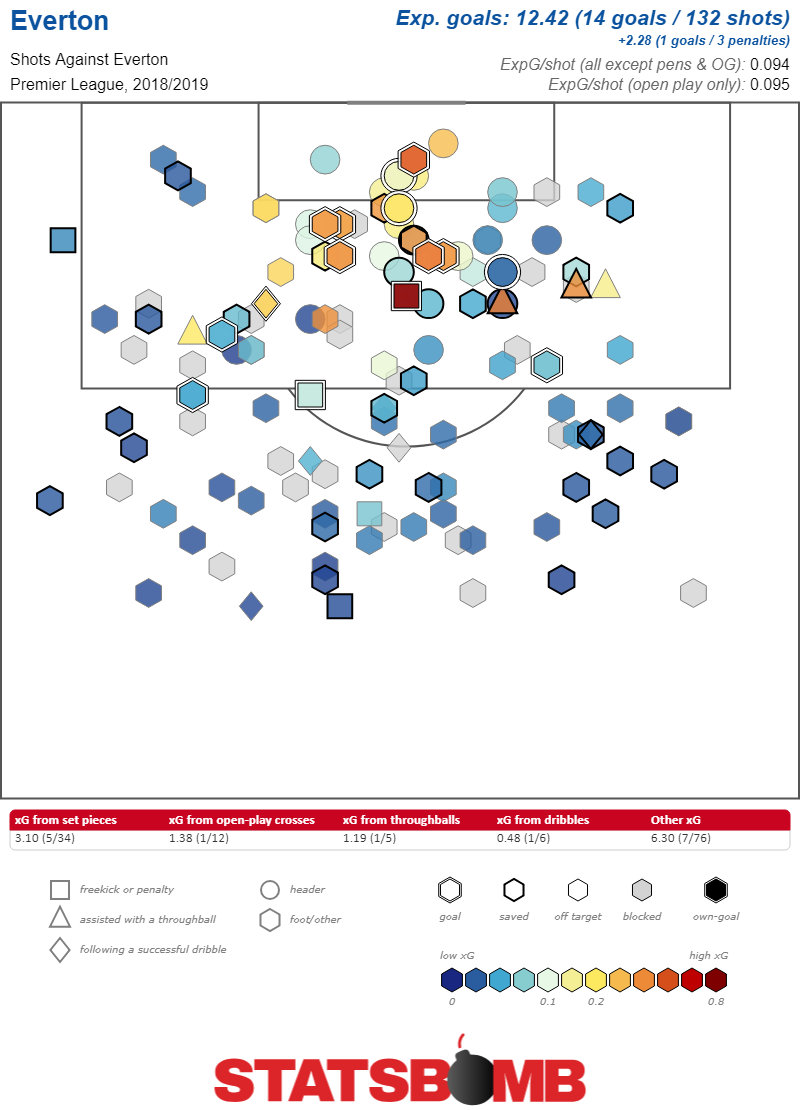 On one level, Everton’s defensive plan isn’t a strong one. Pushing high up the pitch while not pressuring the opposition effectively is a massive tactical red flag. It’s how teams get themselves ripped to shreds by any old half decent counterattacking operations. Giving an opponent time and space to pick a pass against a high defensive line is asking for trouble. But, either by design or just dumb luck, Silva’s setup gets the absolute most out of Gueye. Gueye’s unique ability to turn the opposition over in midfield backstops the entire setup. Teams can’t exploit Everton because Gueye takes the ball back as they try. Everton are in the thick of a battle to qualify for the Europa League. Should they succeed a lot will be made of their newfound open style. New players like Richarlison and Bernard will garner plaudits in attack, and the former (and maybe future when his loan ends) Barcelona midfielder Andre Gomes will get credit for bringing much needed passing to Everton’s midfield. But, it’s Gueye who makes it all possible. He’s the heart of Everton’s defense and the reason Everton are able to play an open attacking high volume style and still get away without pressing the ball well in transition. Idrissa Gueye is Everton’s most important player, the reason their defense functions, the reason their attack and be so open, and the reason Marco Silva has Everton in sixth place. This weekend as Everton roll into Liverpool to face their rivals, if they have any hope of an upset it’ll be because every time the ball looks like it’s headed towards Jurgan Klopp’s killer front three, Gueye shows up to win it back. It’s what he does. Header image courtesy of the Press Association
On one level, Everton’s defensive plan isn’t a strong one. Pushing high up the pitch while not pressuring the opposition effectively is a massive tactical red flag. It’s how teams get themselves ripped to shreds by any old half decent counterattacking operations. Giving an opponent time and space to pick a pass against a high defensive line is asking for trouble. But, either by design or just dumb luck, Silva’s setup gets the absolute most out of Gueye. Gueye’s unique ability to turn the opposition over in midfield backstops the entire setup. Teams can’t exploit Everton because Gueye takes the ball back as they try. Everton are in the thick of a battle to qualify for the Europa League. Should they succeed a lot will be made of their newfound open style. New players like Richarlison and Bernard will garner plaudits in attack, and the former (and maybe future when his loan ends) Barcelona midfielder Andre Gomes will get credit for bringing much needed passing to Everton’s midfield. But, it’s Gueye who makes it all possible. He’s the heart of Everton’s defense and the reason Everton are able to play an open attacking high volume style and still get away without pressing the ball well in transition. Idrissa Gueye is Everton’s most important player, the reason their defense functions, the reason their attack and be so open, and the reason Marco Silva has Everton in sixth place. This weekend as Everton roll into Liverpool to face their rivals, if they have any hope of an upset it’ll be because every time the ball looks like it’s headed towards Jurgan Klopp’s killer front three, Gueye shows up to win it back. It’s what he does. Header image courtesy of the Press Association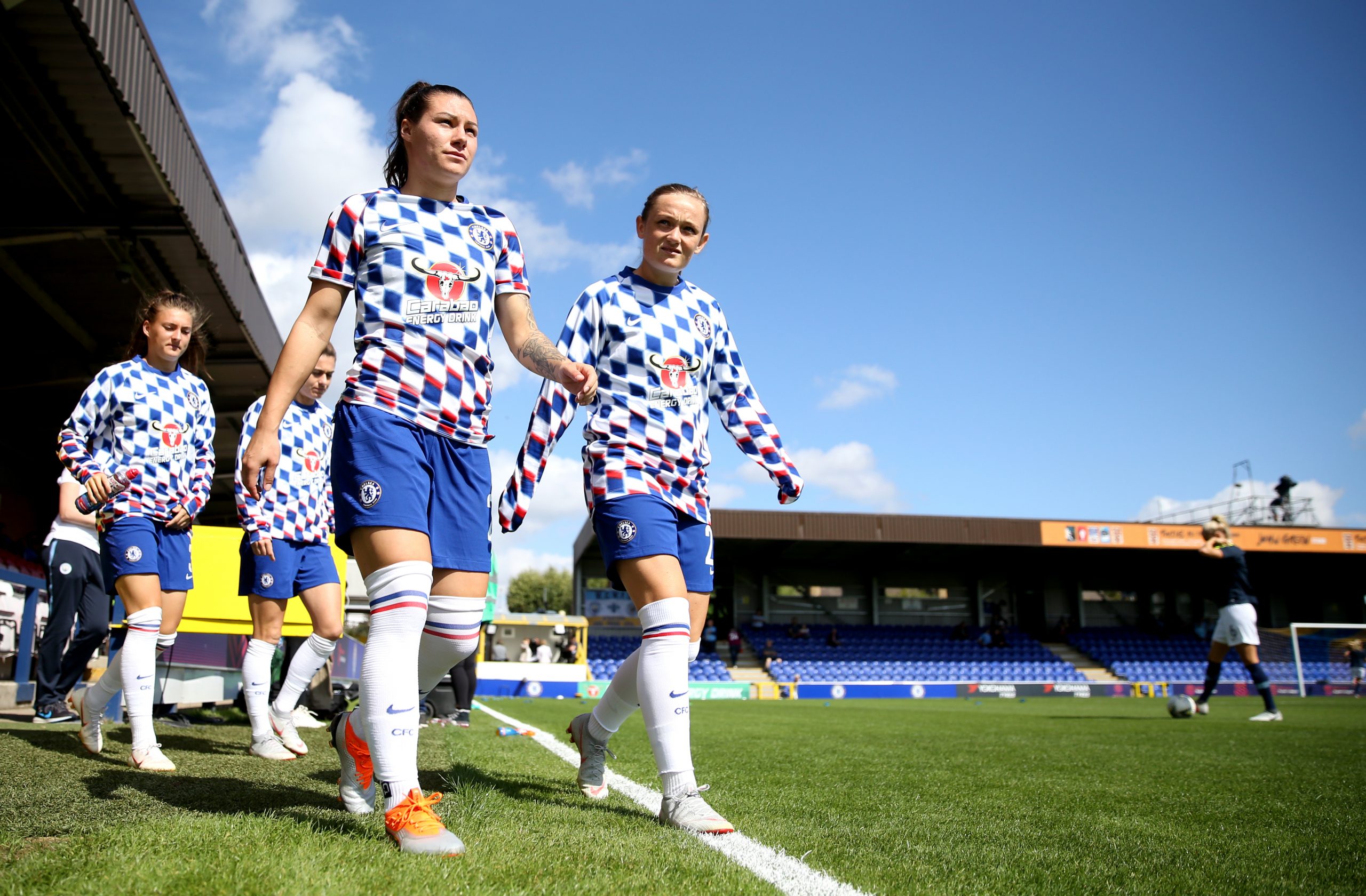
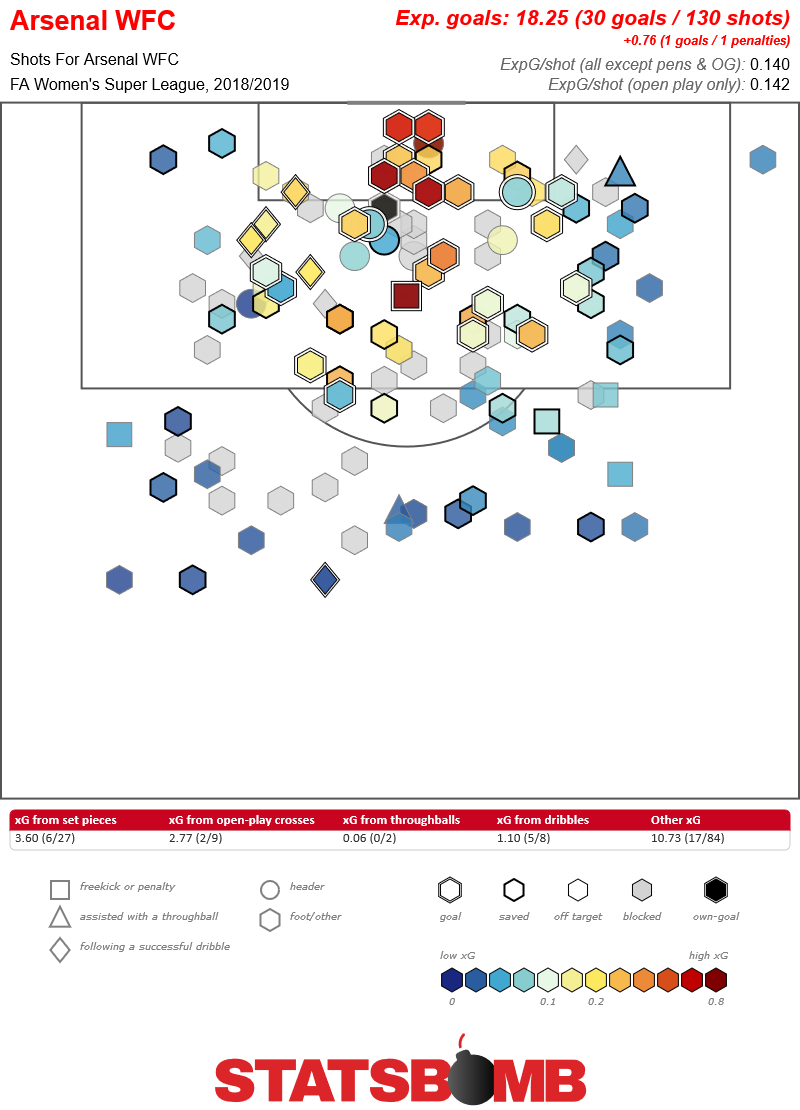
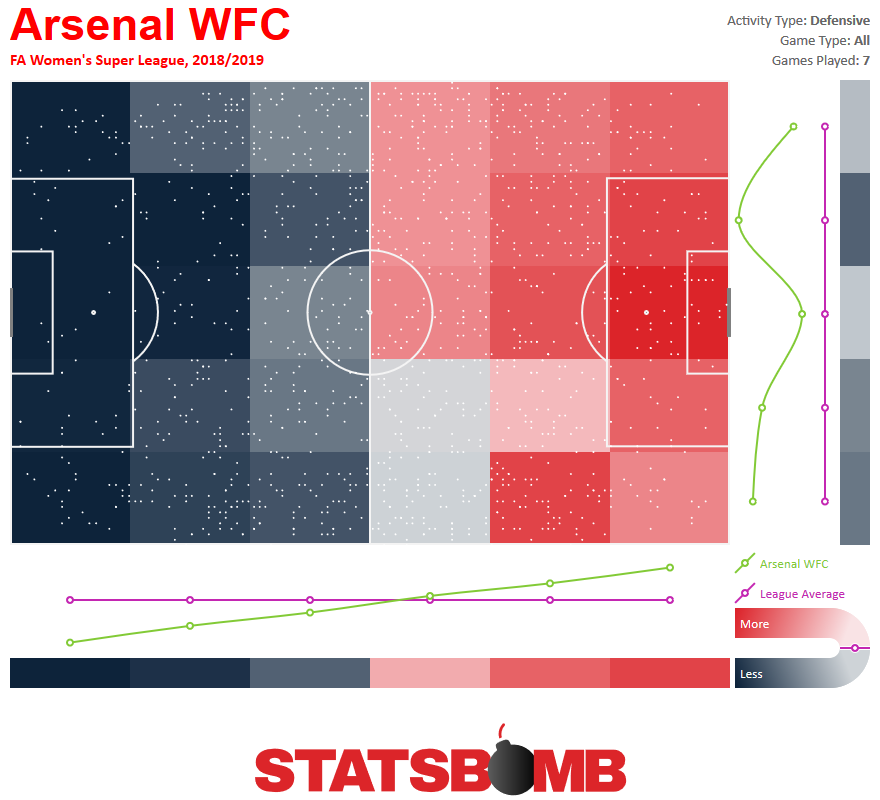
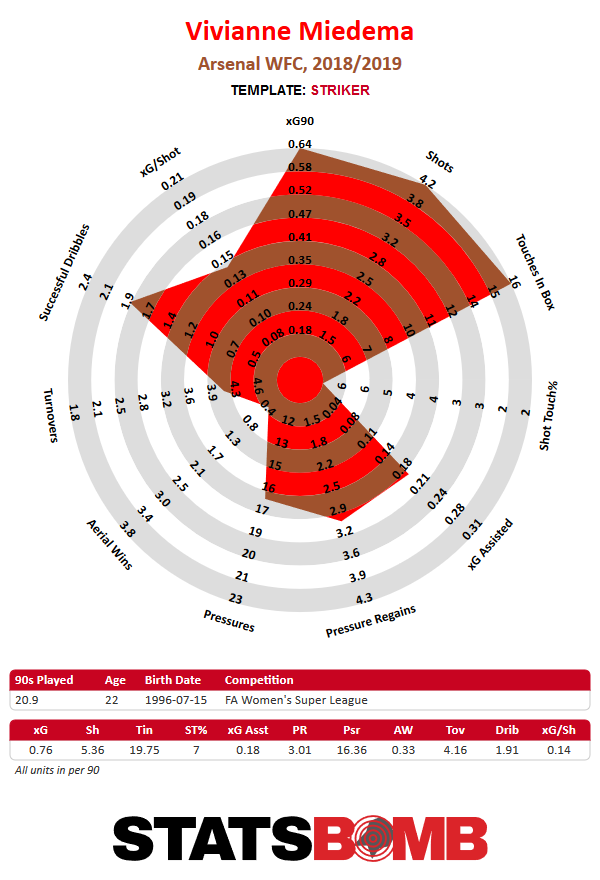
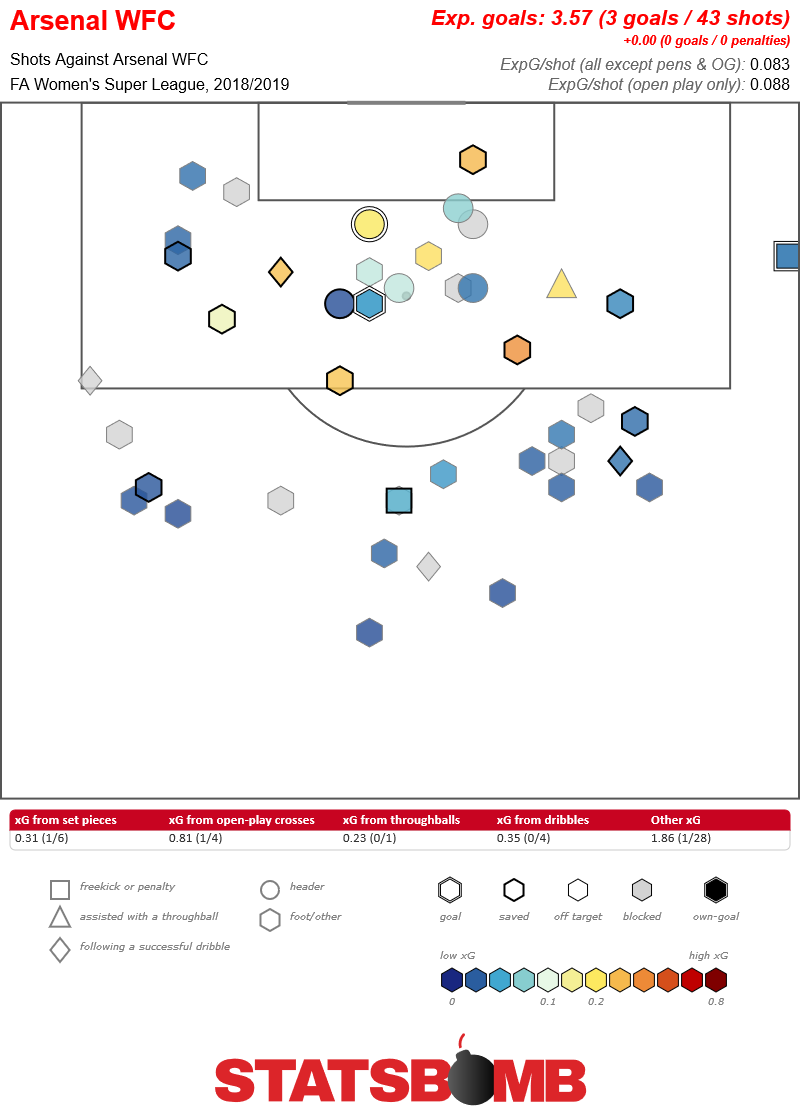 Manchester City
Manchester City 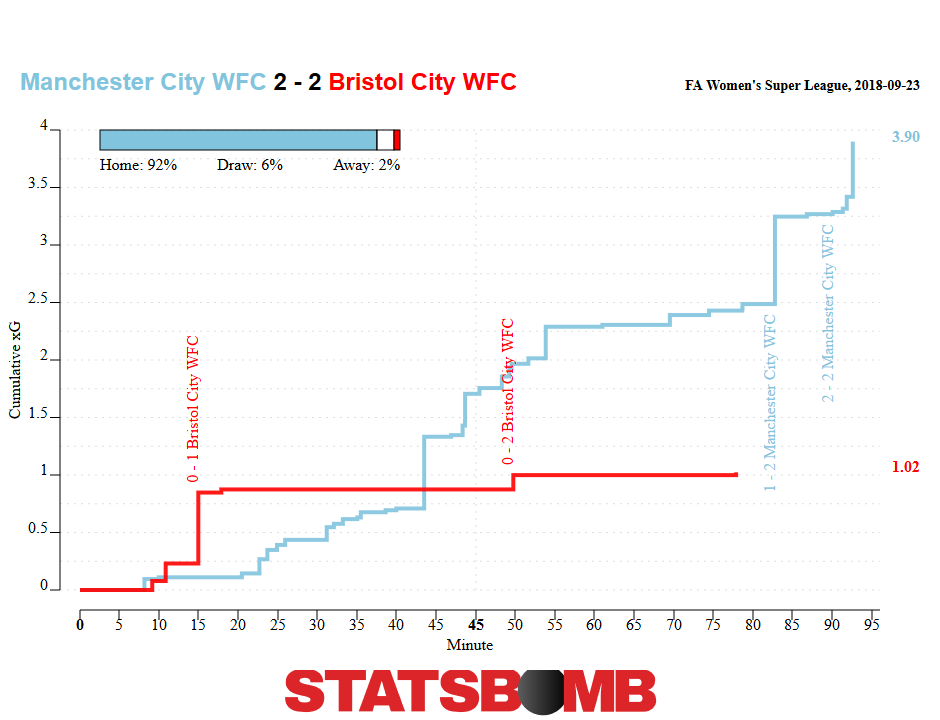 It’s interesting to compare the Arsenal and Manchester City attacking numbers. Man City have generated a very similar amount of shots per game (21.33 and 21 respectively), but the league leaders have much better xG (shot quality) numbers, 3.04 per match to 1.89. When looking at Manchester City’s shots map, it’s easy to notice why that is.
It’s interesting to compare the Arsenal and Manchester City attacking numbers. Man City have generated a very similar amount of shots per game (21.33 and 21 respectively), but the league leaders have much better xG (shot quality) numbers, 3.04 per match to 1.89. When looking at Manchester City’s shots map, it’s easy to notice why that is. 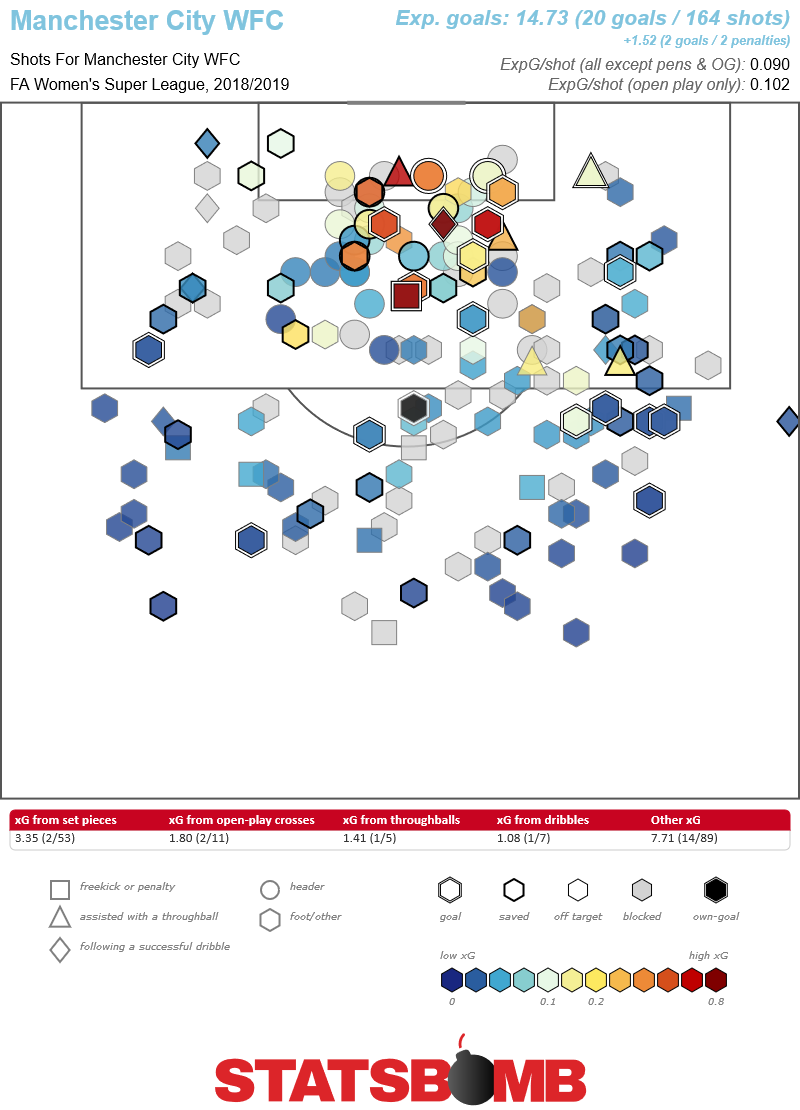
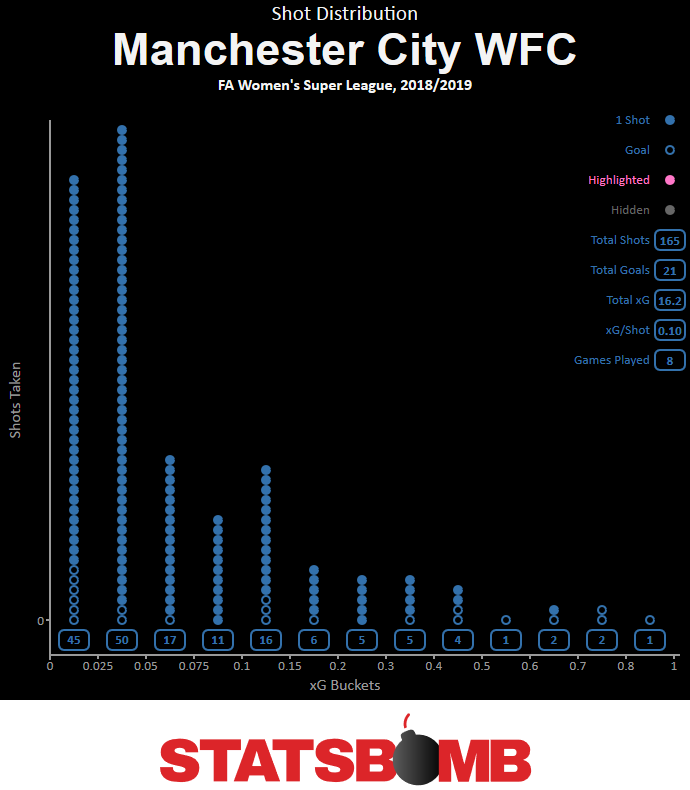
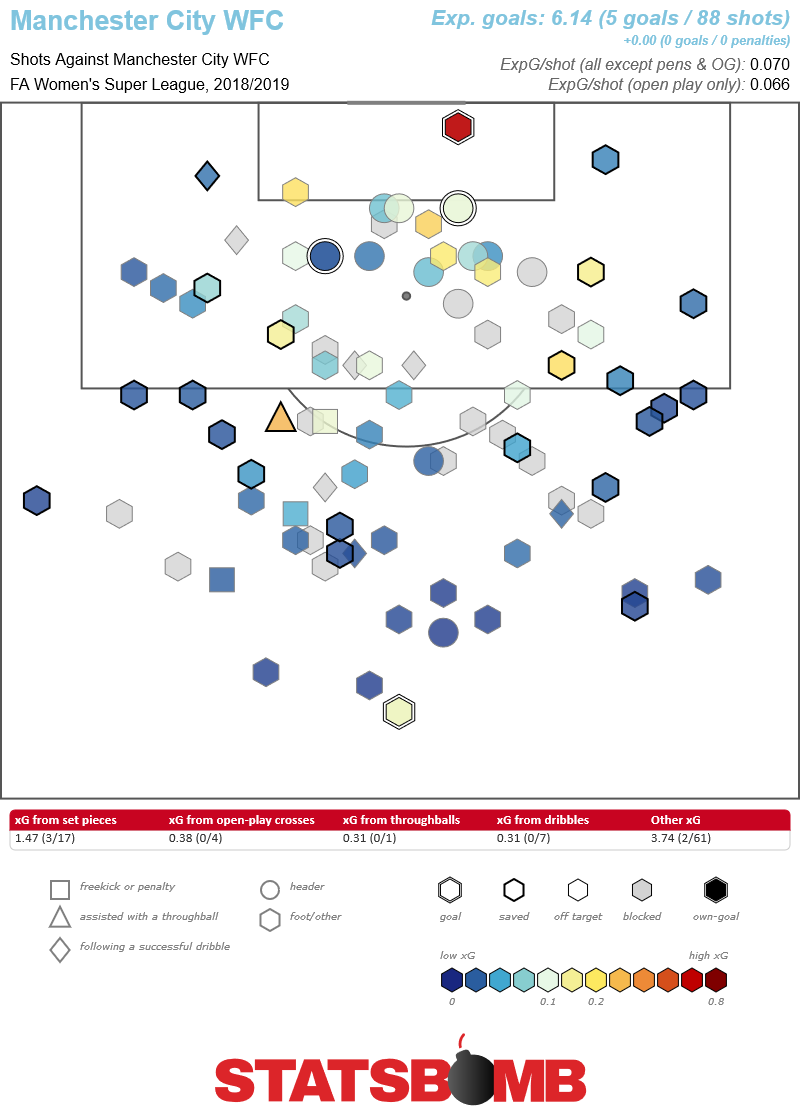
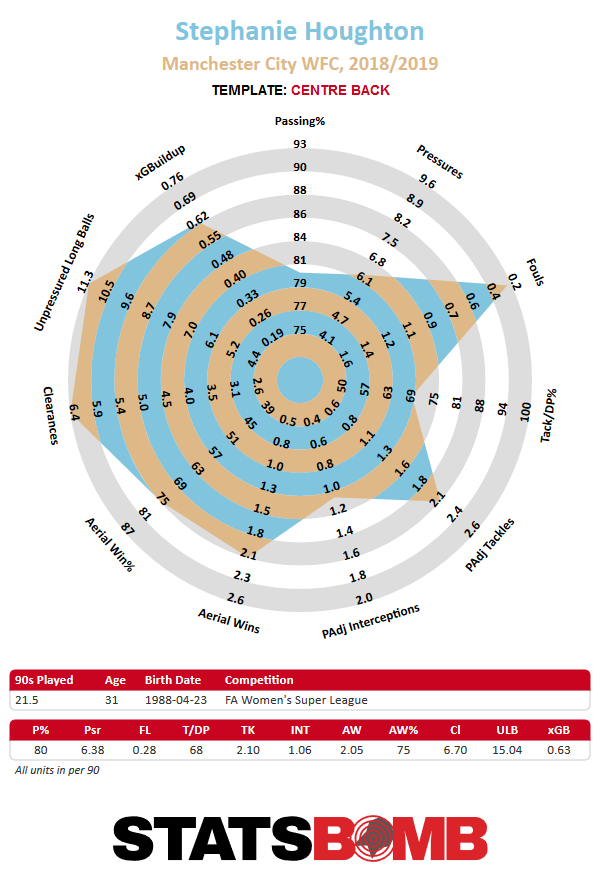
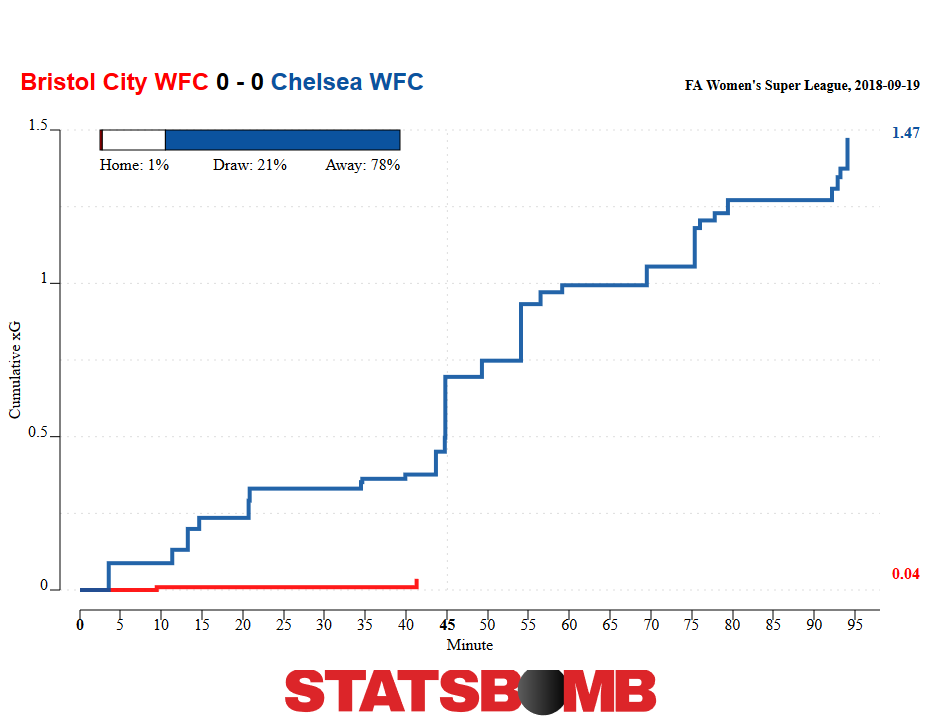
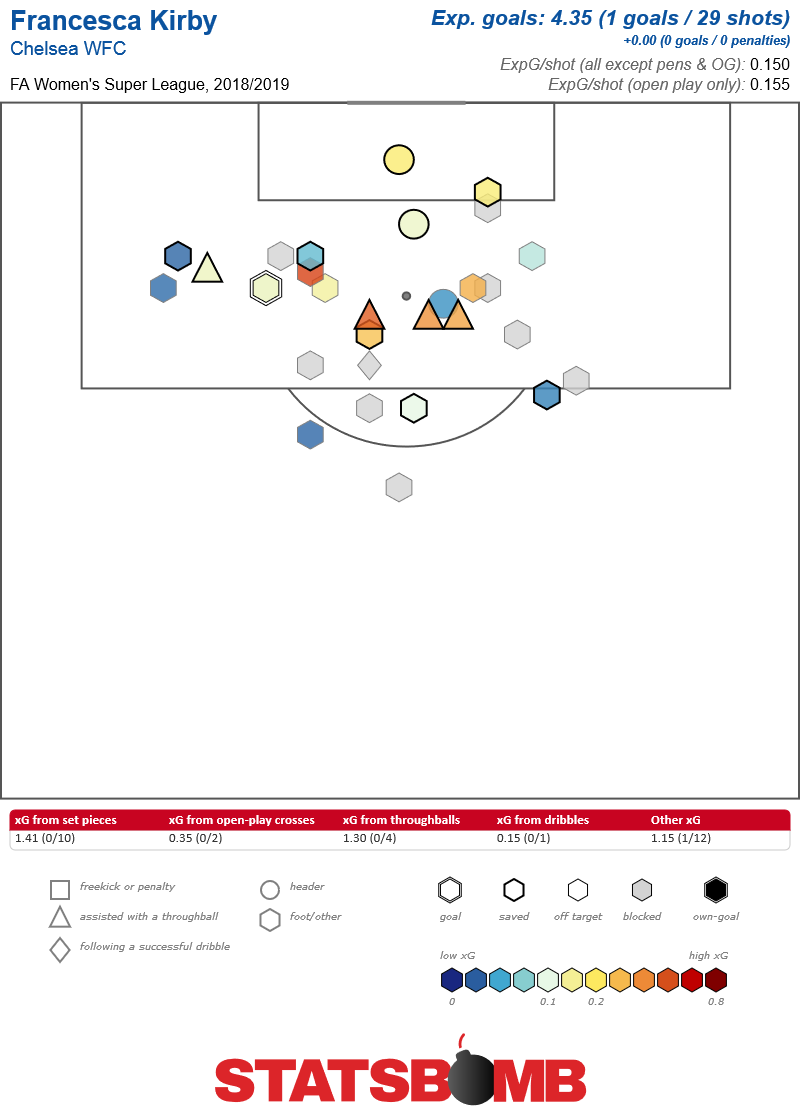
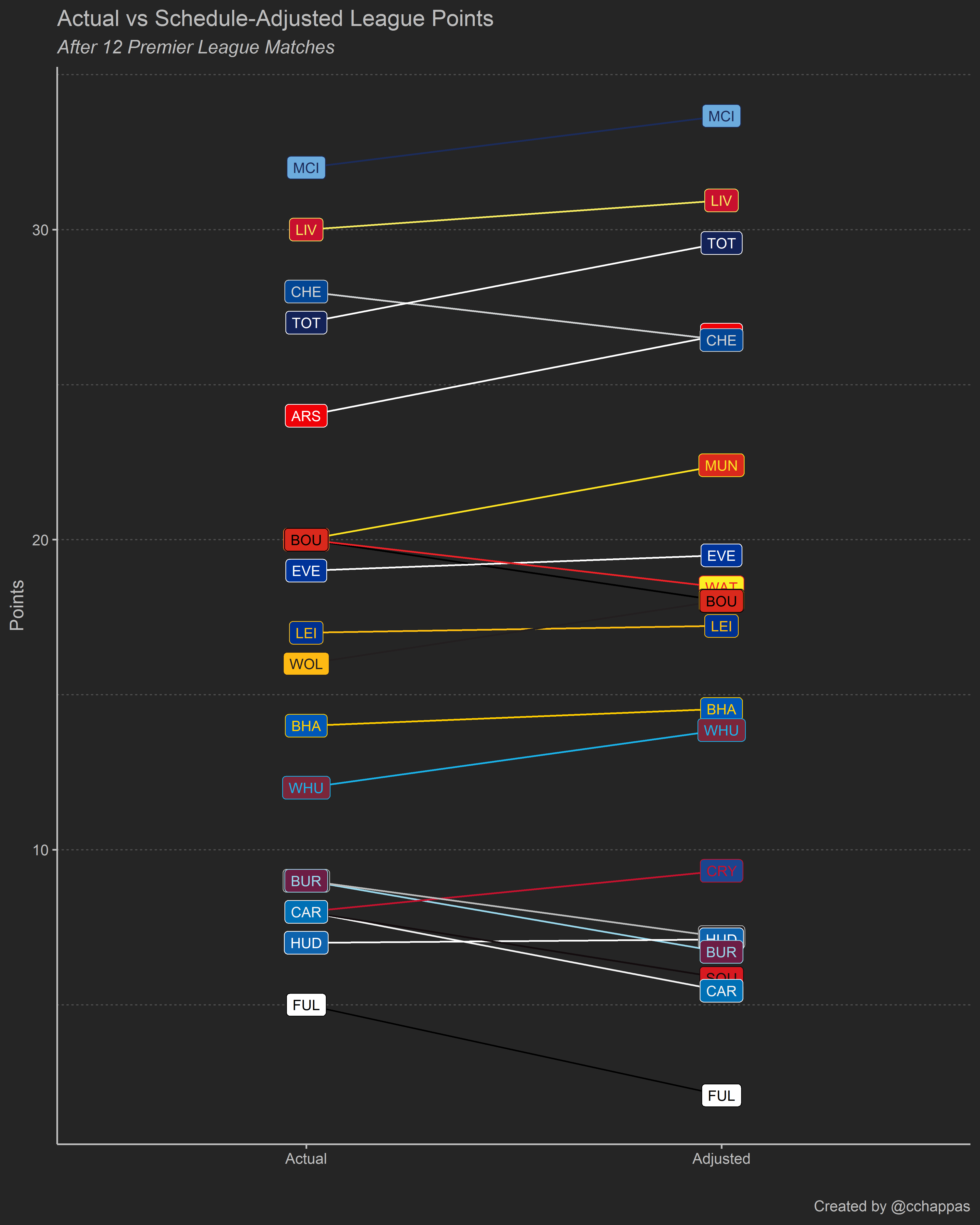
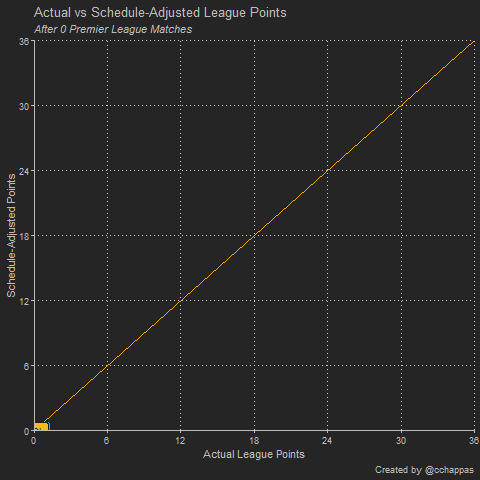
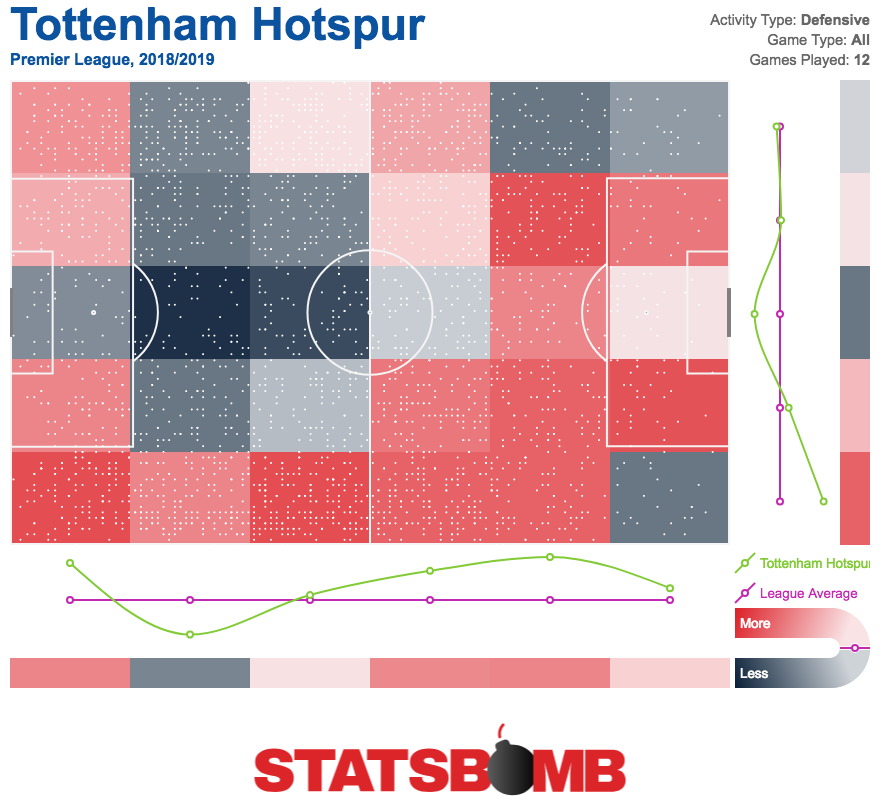
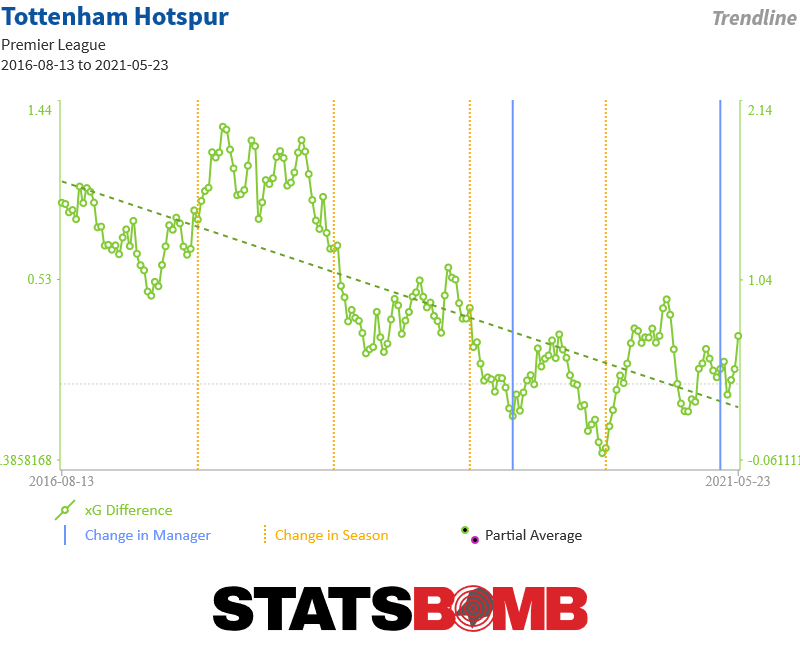

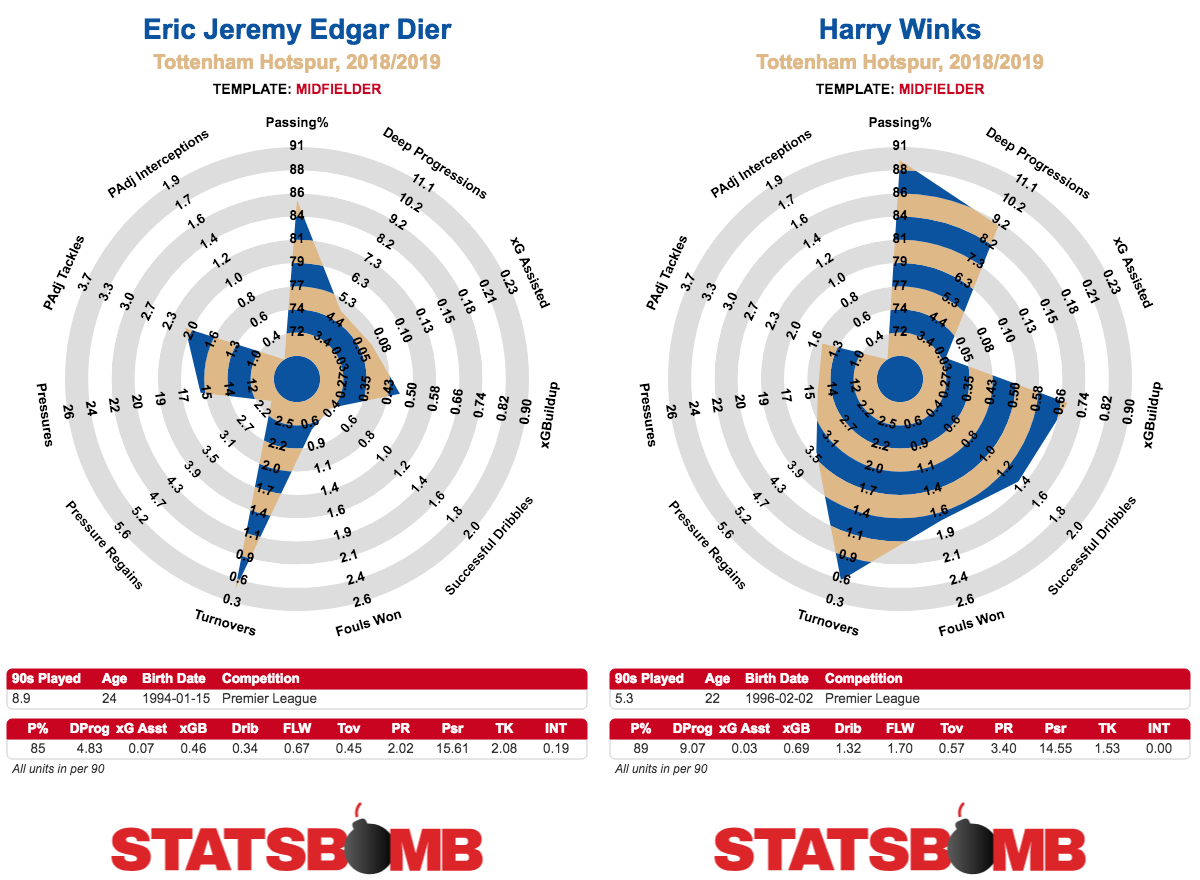
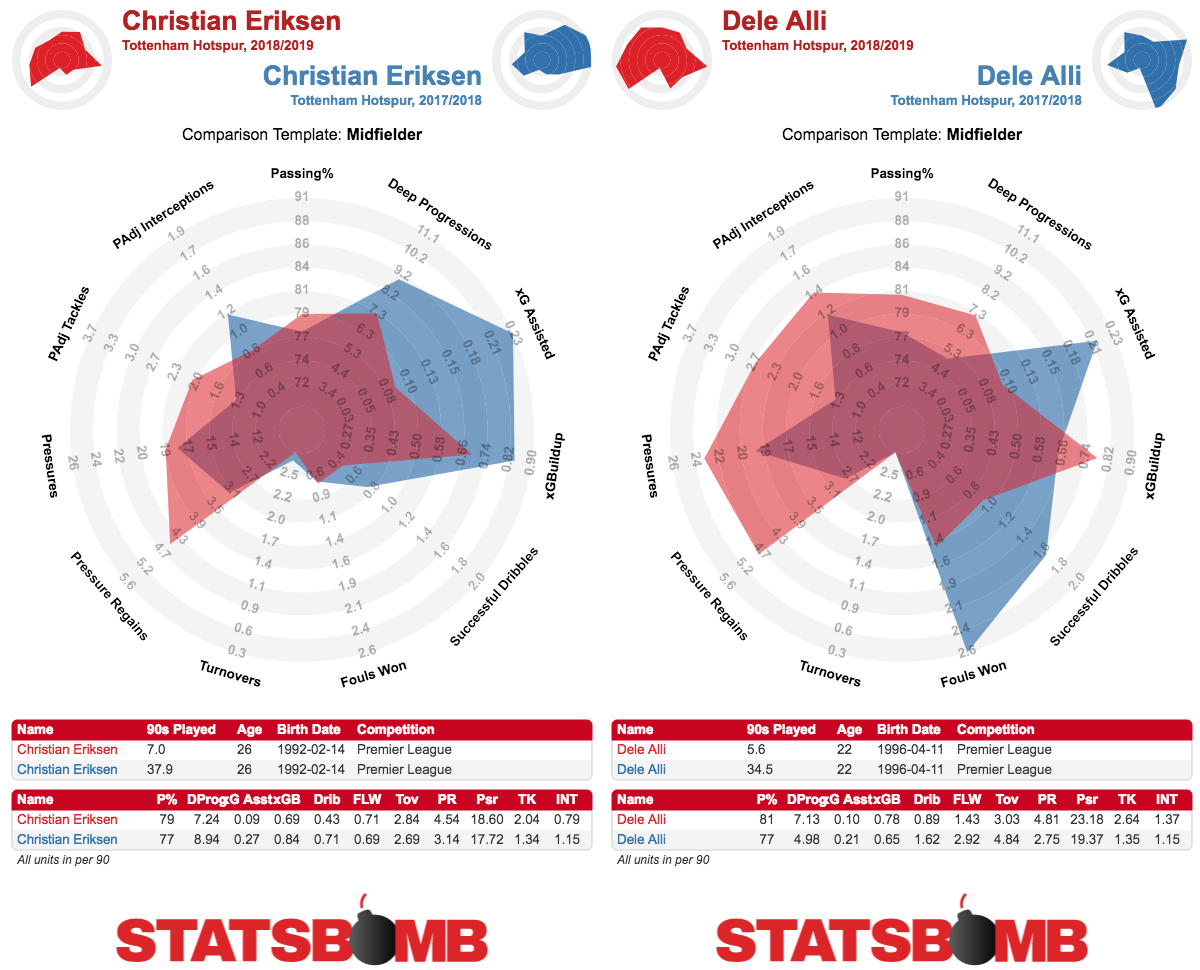
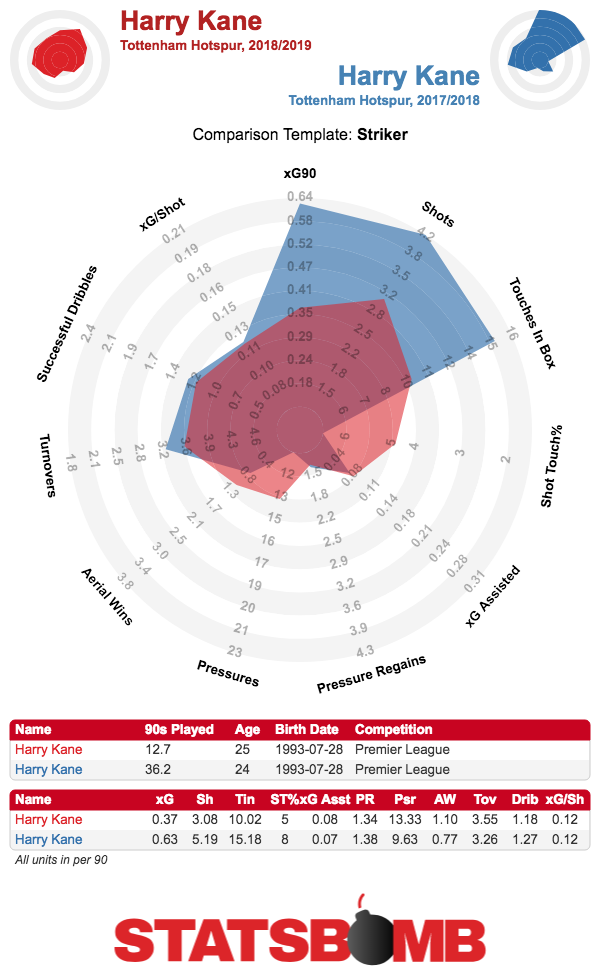
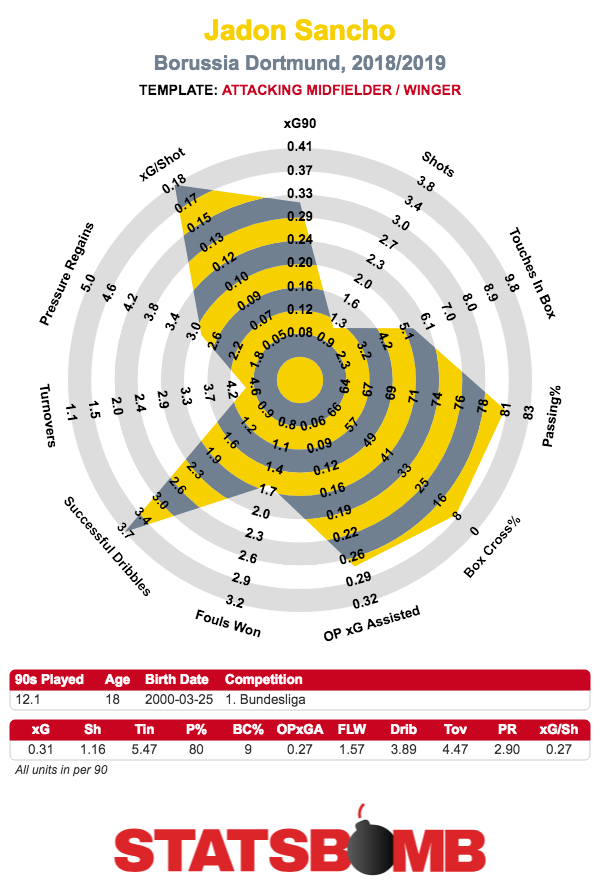
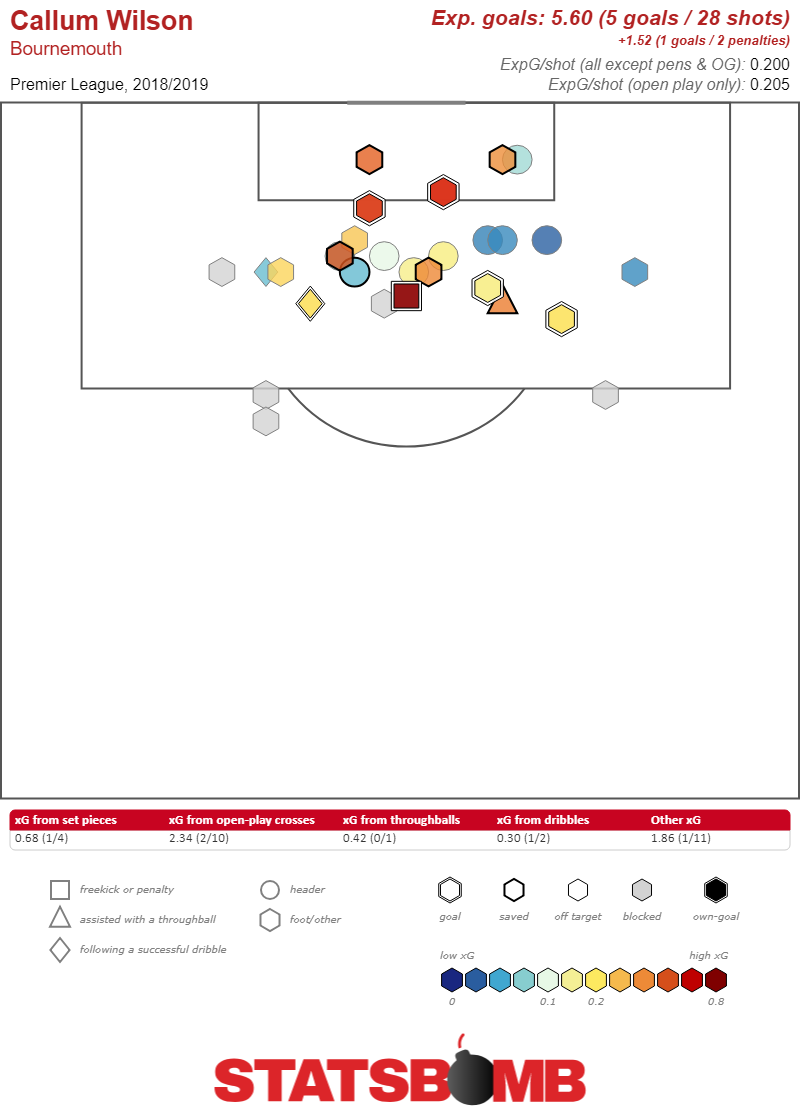 He’s not a particularly high volume player, but when he does touch the ball he turns the opportunity into an extremely high quality shot for himself. Of the league's higher volume shooters (those averaging over two shots per game in 500 minutes played or more), he’s one of only two players to average over 0.20 expected goals per shot. He’s at 0.20, Pierre-Emerick Aubameyang just noses him out at 0.21. Wilson is coming off of two separate cruciate ligament ruptures, one in 2015-16 and one in 2016-17. Last year he was finally healthy and managed to start 23 Premier League games and appear as a sub in five others. And while he only managed eight goals and two assists it’s certainly reasonable to hope that last year was about getting back to former form and this year marks a return to the production he logged before his knee blew up a couple of times. When he injured himself in his first Premier League season, Wilson was coming off back to back 20 goals seasons, first with Coventry City in League One and then with Bournemouth as they won the Championship. Hopefully, especially for Bournemouth, this season just marks the slightly delayed arrival of Wilson at the top level that those two years portended. Marco Reus He’s always been great. He’s always been injured. Now that he’s back and firing on all cylinders he’s the scoring machine from the wing (and sometimes the front) that Dortmund’s title challenge is built on. He's 29, he probably doesn't have too many hurrahs left, so if this is his last one, hopefully it's a good one.
He’s not a particularly high volume player, but when he does touch the ball he turns the opportunity into an extremely high quality shot for himself. Of the league's higher volume shooters (those averaging over two shots per game in 500 minutes played or more), he’s one of only two players to average over 0.20 expected goals per shot. He’s at 0.20, Pierre-Emerick Aubameyang just noses him out at 0.21. Wilson is coming off of two separate cruciate ligament ruptures, one in 2015-16 and one in 2016-17. Last year he was finally healthy and managed to start 23 Premier League games and appear as a sub in five others. And while he only managed eight goals and two assists it’s certainly reasonable to hope that last year was about getting back to former form and this year marks a return to the production he logged before his knee blew up a couple of times. When he injured himself in his first Premier League season, Wilson was coming off back to back 20 goals seasons, first with Coventry City in League One and then with Bournemouth as they won the Championship. Hopefully, especially for Bournemouth, this season just marks the slightly delayed arrival of Wilson at the top level that those two years portended. Marco Reus He’s always been great. He’s always been injured. Now that he’s back and firing on all cylinders he’s the scoring machine from the wing (and sometimes the front) that Dortmund’s title challenge is built on. He's 29, he probably doesn't have too many hurrahs left, so if this is his last one, hopefully it's a good one. 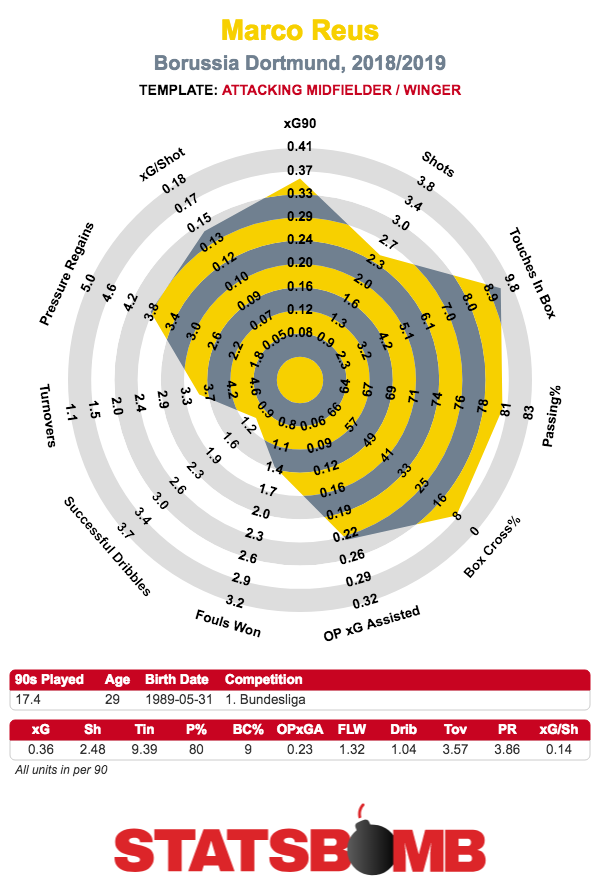 Helter skelter La Liga There are only seven teams in Spain who concede more expected goals per game than Barcelona. They are hanging on to their first place position not because of anything they’re doing on the defensive side of the ball, but because Lionel Messi is leading a line that can (and has to) outscore anybody and everybody. The shots that defense gives up are pretty pretty ugly looking.
Helter skelter La Liga There are only seven teams in Spain who concede more expected goals per game than Barcelona. They are hanging on to their first place position not because of anything they’re doing on the defensive side of the ball, but because Lionel Messi is leading a line that can (and has to) outscore anybody and everybody. The shots that defense gives up are pretty pretty ugly looking. 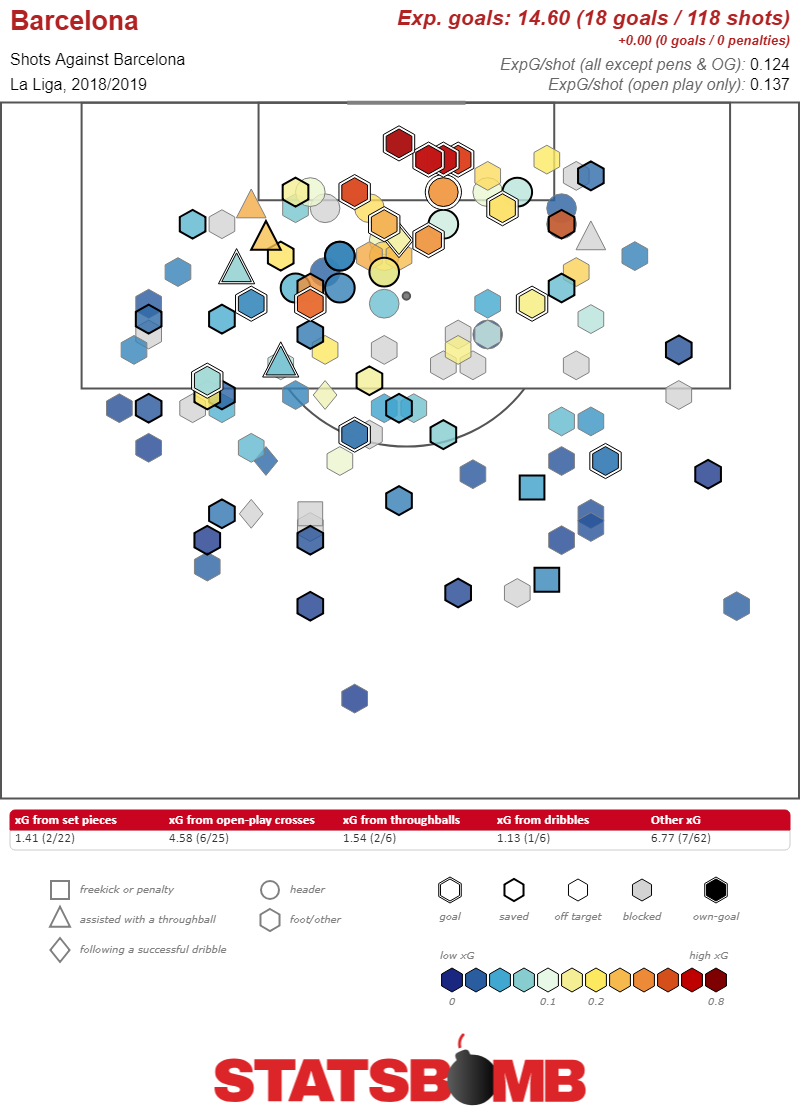 It’s not just Barca either. Second place Sevilla has
It’s not just Barca either. Second place Sevilla has 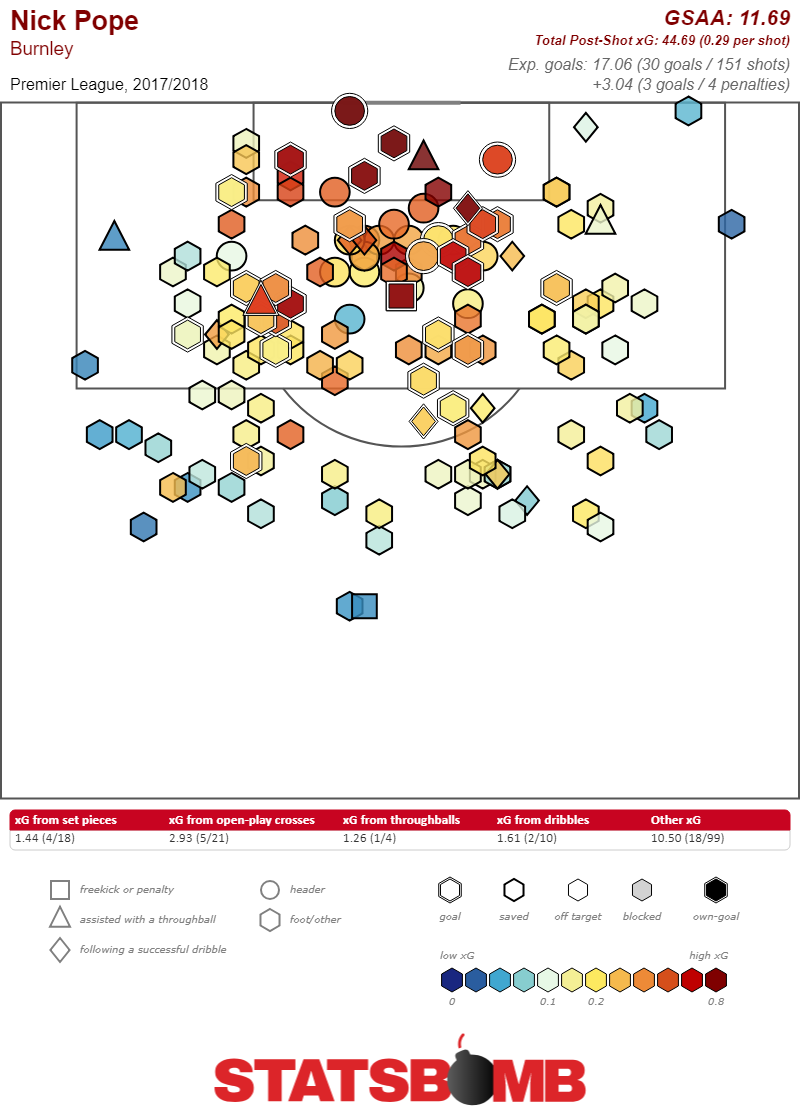 Last season Joe Hart played for West Ham. He was terrible.
Last season Joe Hart played for West Ham. He was terrible. 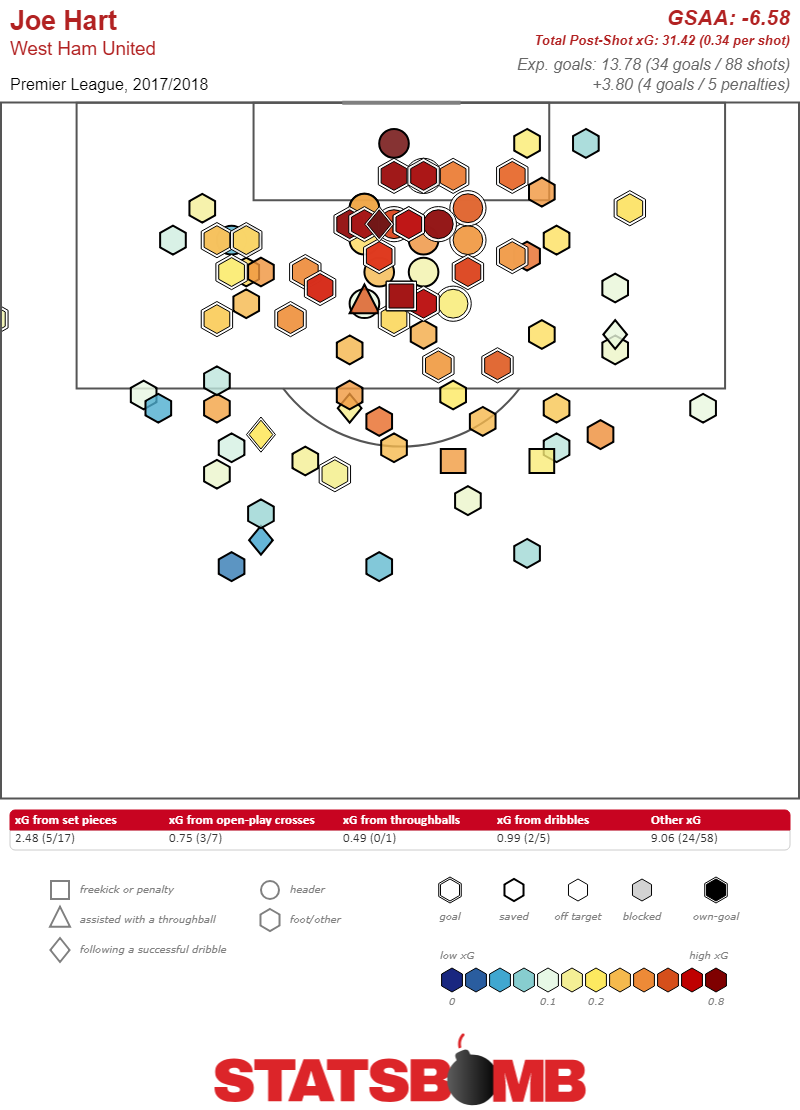 So naturally when Pope got hurt, Burnley went out and bought Joe Hart and handed him the keys, as you do. So far, he’s been…entirely average.
So naturally when Pope got hurt, Burnley went out and bought Joe Hart and handed him the keys, as you do. So far, he’s been…entirely average. 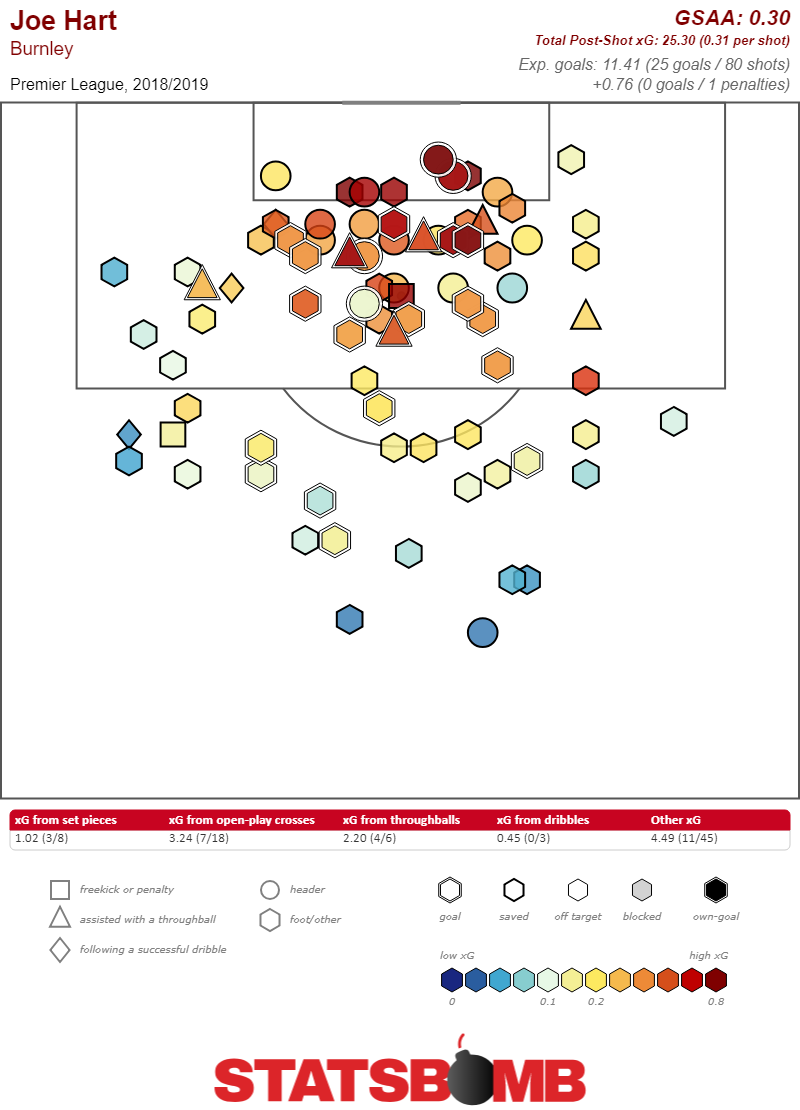 What does it all mean? I have no idea! But this experiment should help us figure it out. Young stars breaking out Andre Silva Everybody thought Andre Silva had potential. After announcing his presence at 20 years old for Porto with 16 goals in 32 games (albeit with five from the penalty spot) he promptly moved to AC Milan where, for whatever reason, he fell on his face. He only started seven games and scored two goals. A year later, he’s still only 23 years old, and he’s a fixture of Sevilla’s high-flying attack. He already has seven goals and his 0.52 expected goals per 90 is fourth in La Liga among players with more than 500 minutes. He’s not the highest volume shooter, 3.03 is tenth in the league, but his 0.17 expected goals per shot is fourth in La Liga among high volume (more than two shots per game) shooters. He camps out in the middle of the penalty area and puts it on net, and that’s exactly what Sevilla needs.
What does it all mean? I have no idea! But this experiment should help us figure it out. Young stars breaking out Andre Silva Everybody thought Andre Silva had potential. After announcing his presence at 20 years old for Porto with 16 goals in 32 games (albeit with five from the penalty spot) he promptly moved to AC Milan where, for whatever reason, he fell on his face. He only started seven games and scored two goals. A year later, he’s still only 23 years old, and he’s a fixture of Sevilla’s high-flying attack. He already has seven goals and his 0.52 expected goals per 90 is fourth in La Liga among players with more than 500 minutes. He’s not the highest volume shooter, 3.03 is tenth in the league, but his 0.17 expected goals per shot is fourth in La Liga among high volume (more than two shots per game) shooters. He camps out in the middle of the penalty area and puts it on net, and that’s exactly what Sevilla needs. 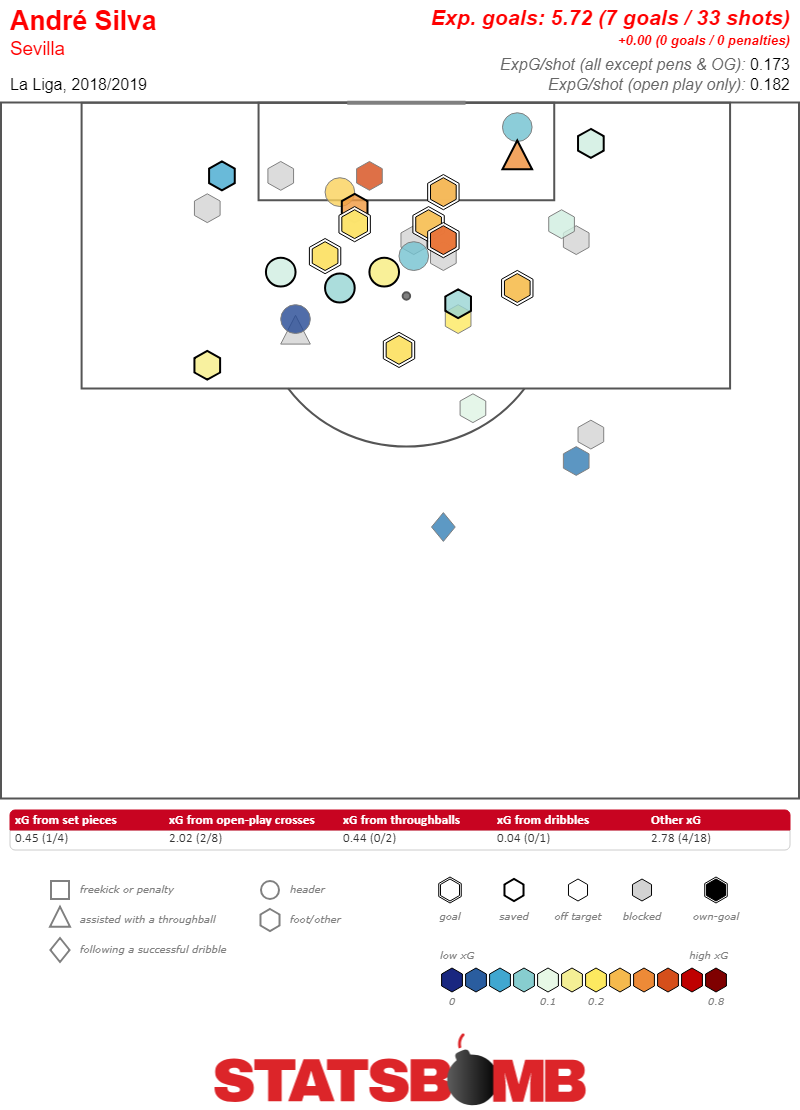 Luka Jovic He’s 20. He’s scored nine goals in less than 600 minutes. Apparently all he does is shoot. It sure seems to be working.
Luka Jovic He’s 20. He’s scored nine goals in less than 600 minutes. Apparently all he does is shoot. It sure seems to be working. 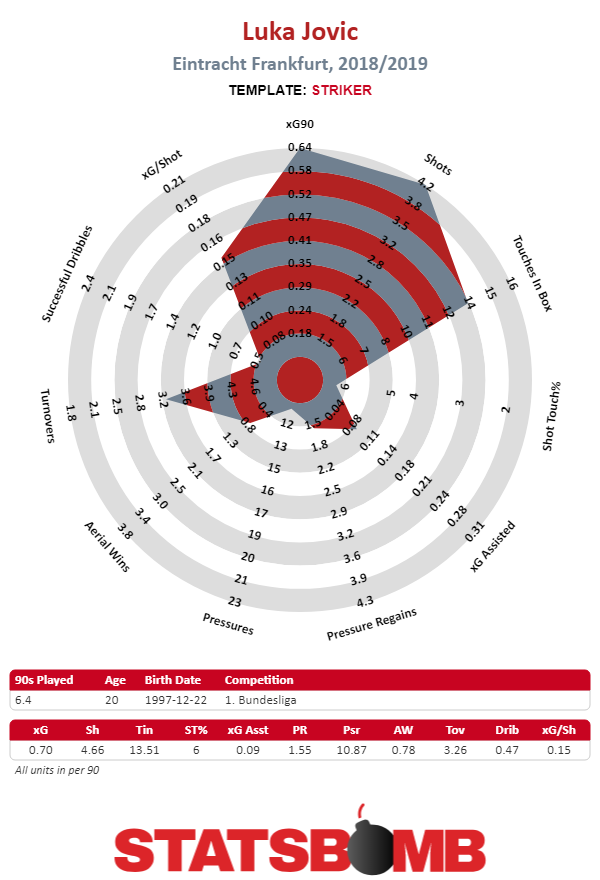 Jaden Sancho Whooooo boy.
Jaden Sancho Whooooo boy. 